Belarus has long been known as the hardest country to get into as a tourist in Europe, even harder than Russia, with its complicated and expensive visa requirements. For that reason, the country has seen limited tourism over the years, but all that is about to change. In February this year, Belarus introduced a new visa-free regime, allowing citizens from 80 countries (including all EU countries) to enter the country visa-free for 5 days, if they arrive to and depart from Minsk National Airport.
When I was researching where to go for my Autumn holiday this year, I had originally thought of Azerbaijan, a country I’ve been dying to visit for a long time. But between school and work, I only had five days off to go somewhere, and given the strict visa requirements of Azerbaijan as well as the size of the country, I figured it wouldn’t be worth it for just five days, so I will go there some other time (hopefully in January!). Instead, I stumbled upon these new visa rules for Belarus, and figured it would be the perfect time to go! Five days visa free, and five days was exactly what I had. I’ve also wanted to visit Belarus for ages, but I’d put it off because of the visa situaton. Now I had no excuse not to go!
So on October 17th, I arrived in the airport of Minsk, got my free 5-day visa and started my explorations of the country. I actually managed to see quite a bit of the enormous country in the short time I had, which you can read about in my upcoming posts.
After travelling for over six hours, flying from Copenhagen to Warsaw, waiting for three hours and then flying to Minsk, I was terribly excited to finally be in Belarus, my 60th country!
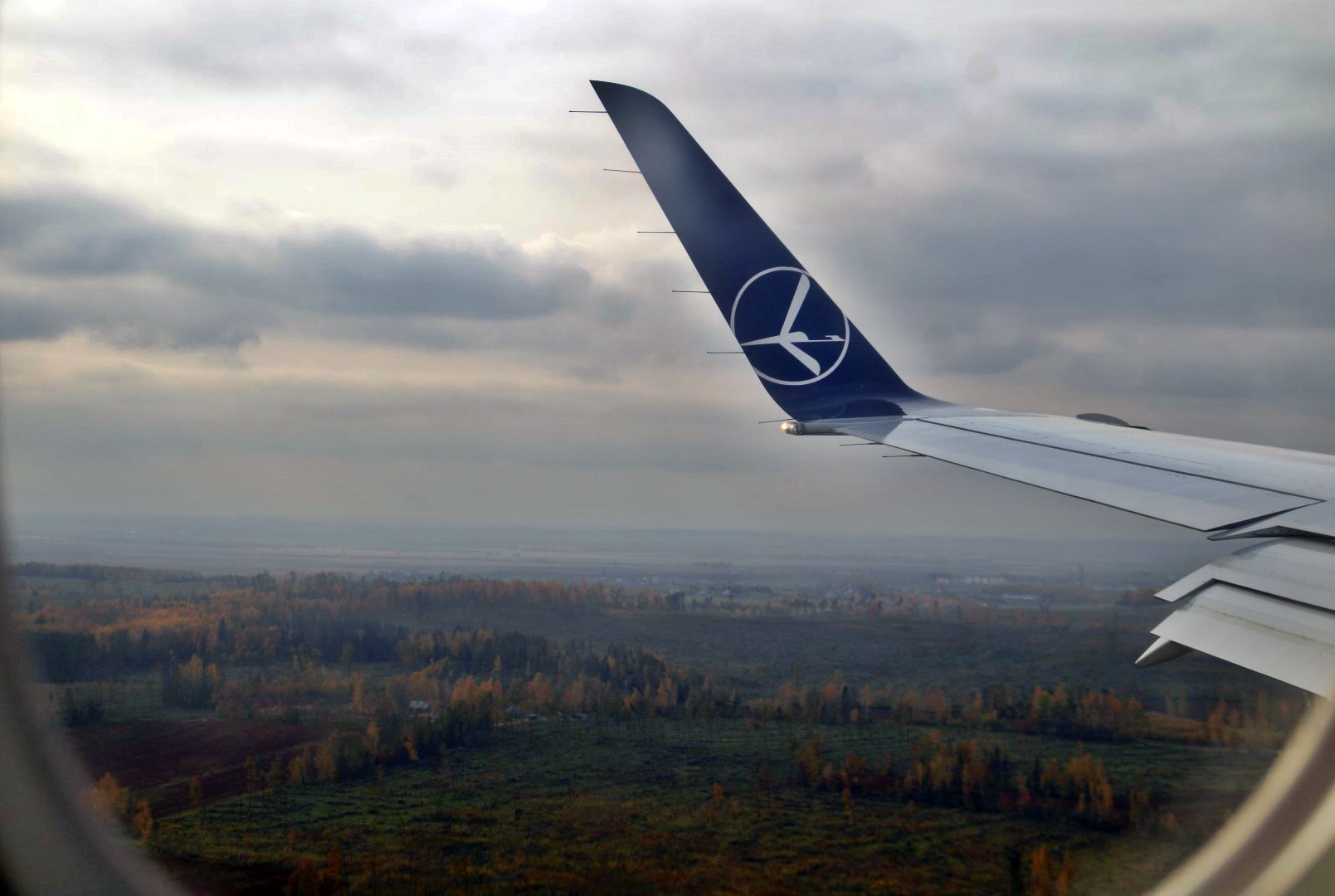
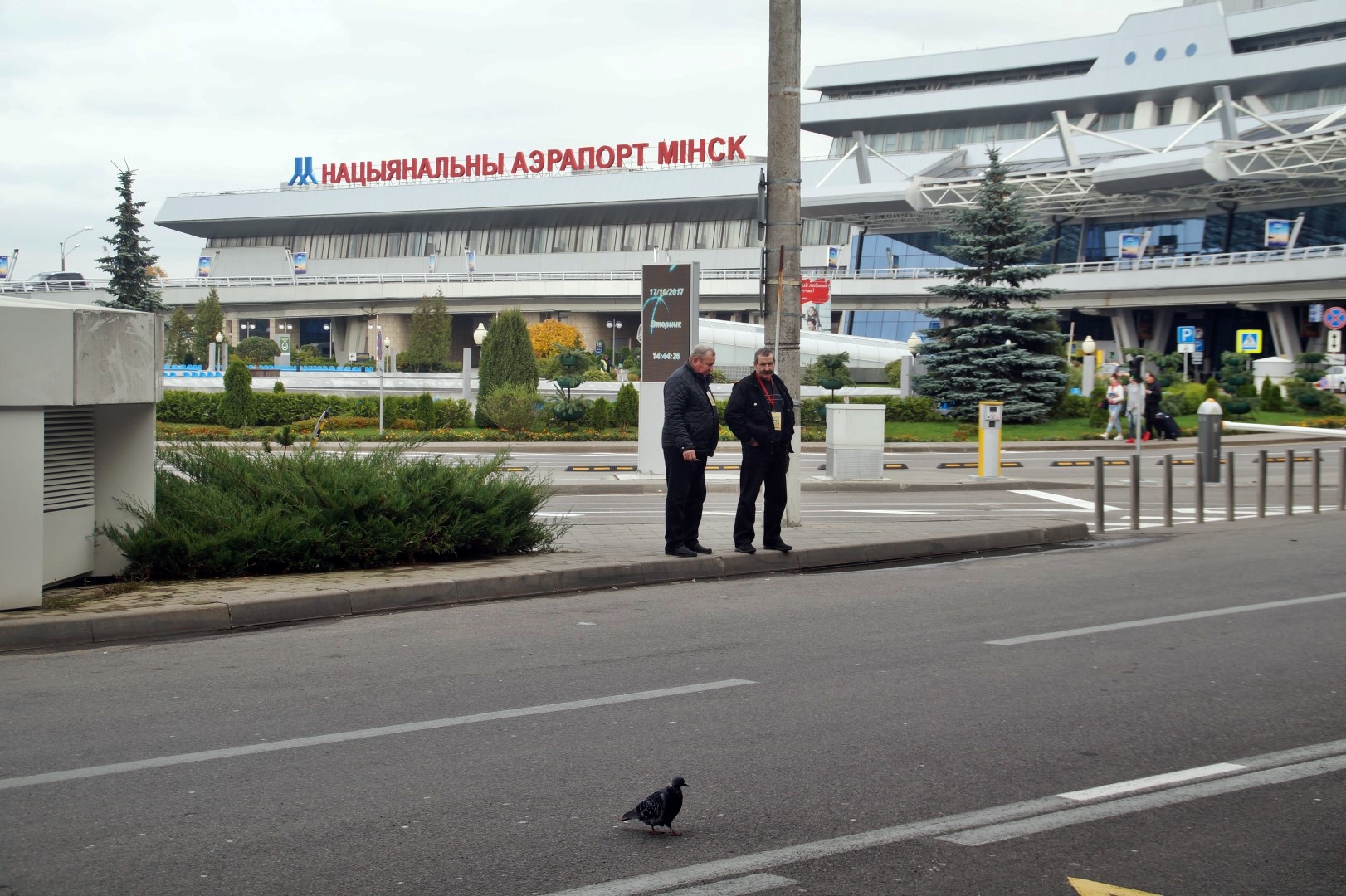
Thankfully, getting the 5-day visa at the airport wasn’t a problem – I only needed to get a travel insurance for 6 euros. I exchanged some euros into Belarusian rubles and then I was off on the bus to the center of Minsk on a ticket for just 4 BYN (13 DKK). I could tell that Belarus was going to be a cheap experience!
My first impression of Minsk was that it looked like a city I would expect to find in Russia. Other than that, it was extremely colourful with all the Autumn leaves falling from the trees, covering the streets in an orange carpet.
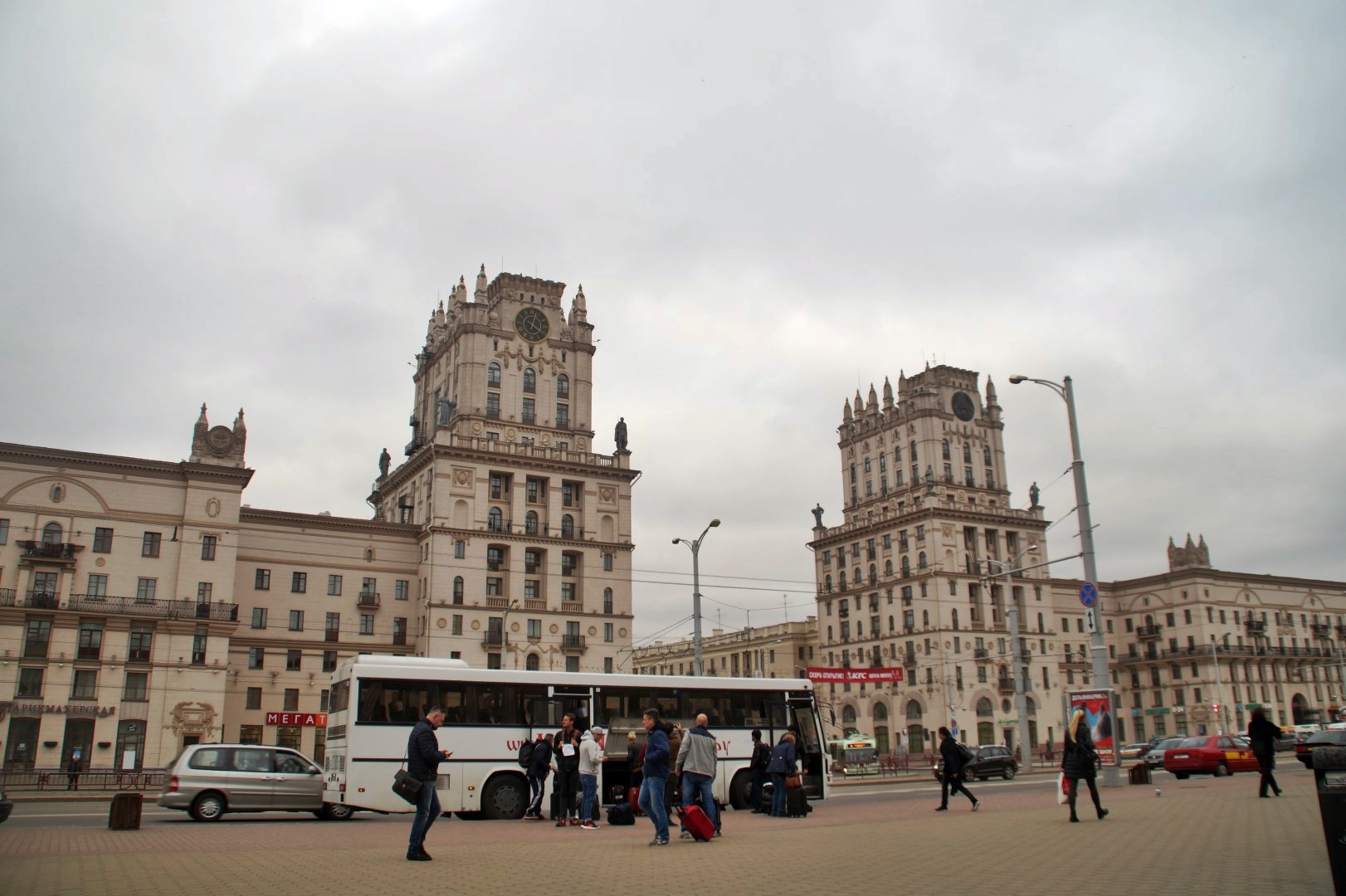
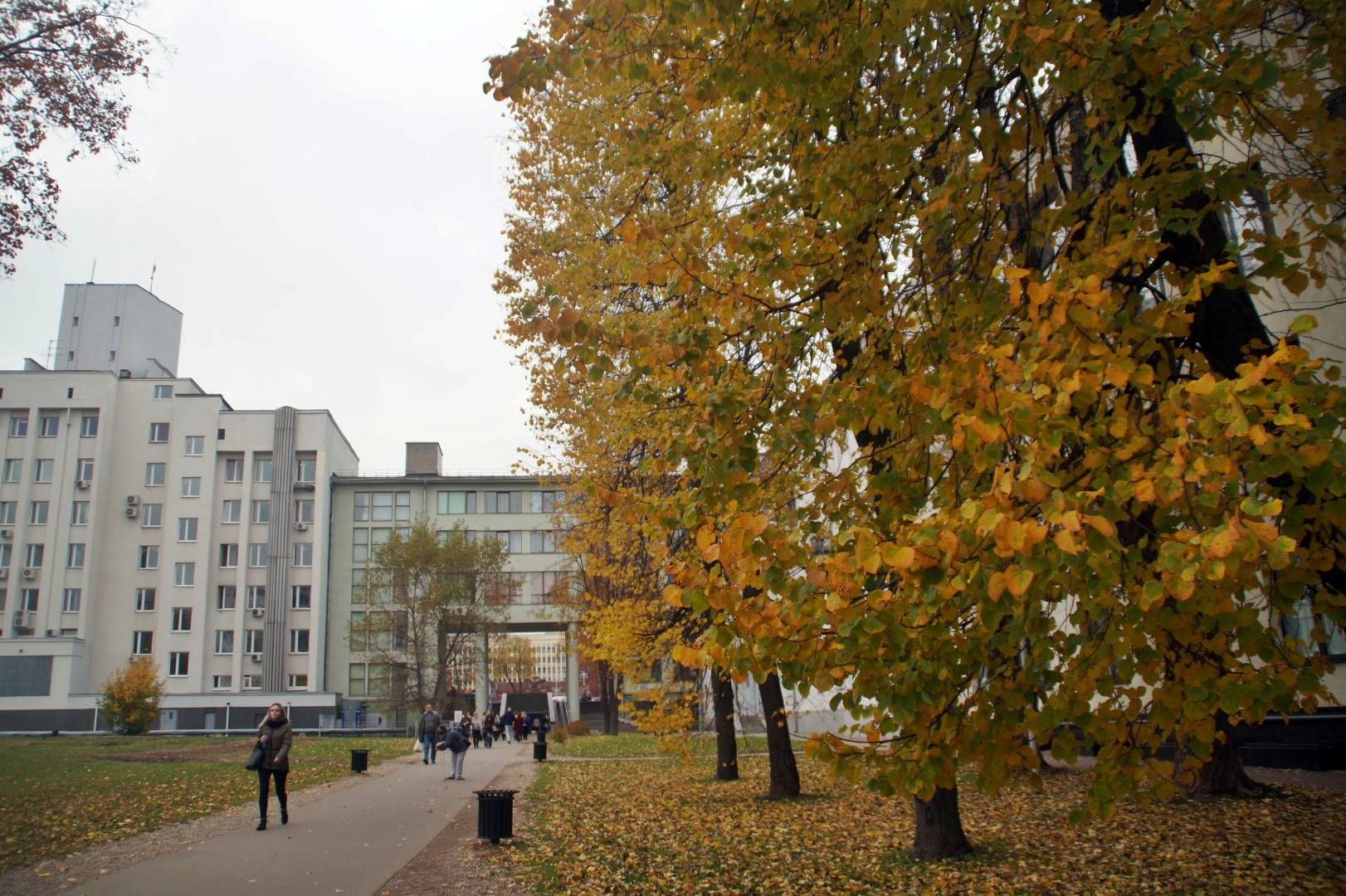


Before going to the hostel, I decided to explore some of Minsk, since the day was still young.
As you might know, Belarus is a politically and journalistically controlled country. It was part of the former USSR, where it was one of the most developed republics. Today, the country has many remains from its socialist past, including one of Minsk’s main landmarks, the Independence Square, which is one of the biggest squares in Europe. The construction of the square started in 1964, during the period of the Byelorussian Soviet Socialist Republic, when it was called Lenin Square. After the fall of the USSR, the square was reconstructed and renamed Independence Square and was finally completed in 2002.
At the square, there are quite a few sights to explore, such as the beautiful Roman Catholic Church of Saints Simon and Helen known as ‘the Red Church’, and the Lenin Statue, standing in front of the Supreme Soviet building, the functioning parliament for Belarus, which is one of the few buildings that survived World War 2 in Minsk. I had heard that you aren’t allowed to take photos of the Lenin statue, but I saw other tourists doing it though, so I did snap some plus a selfie 😉
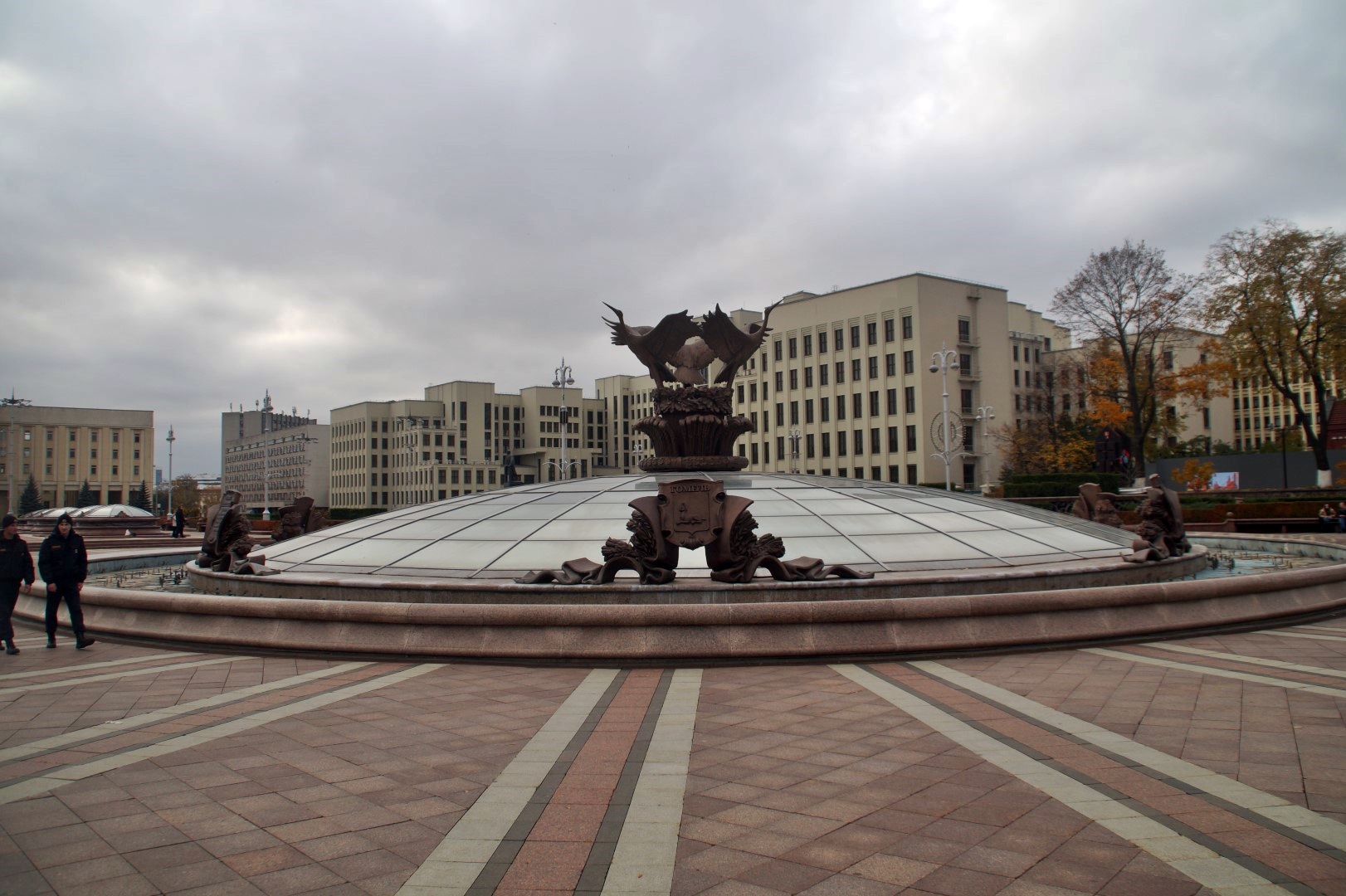
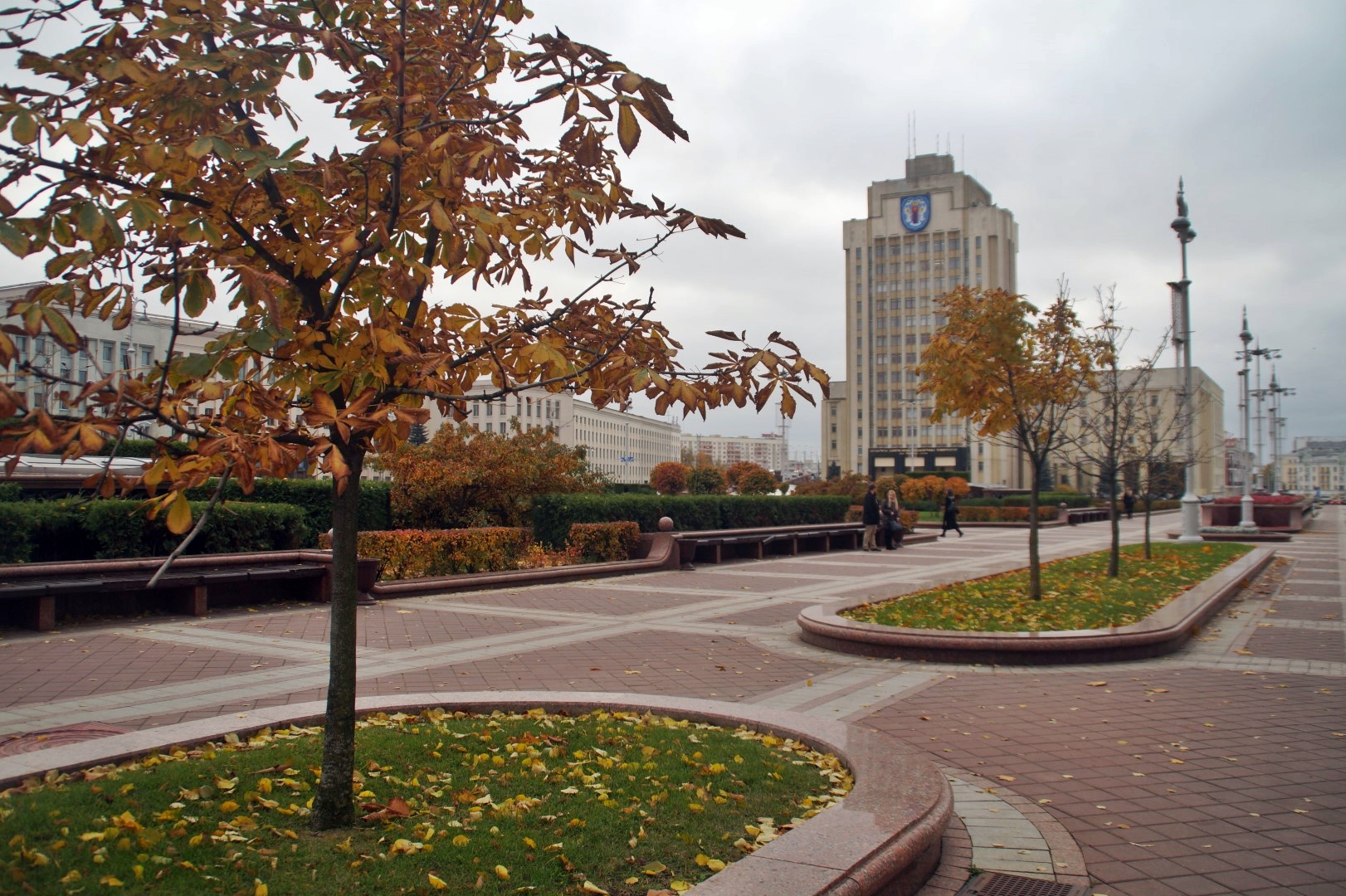
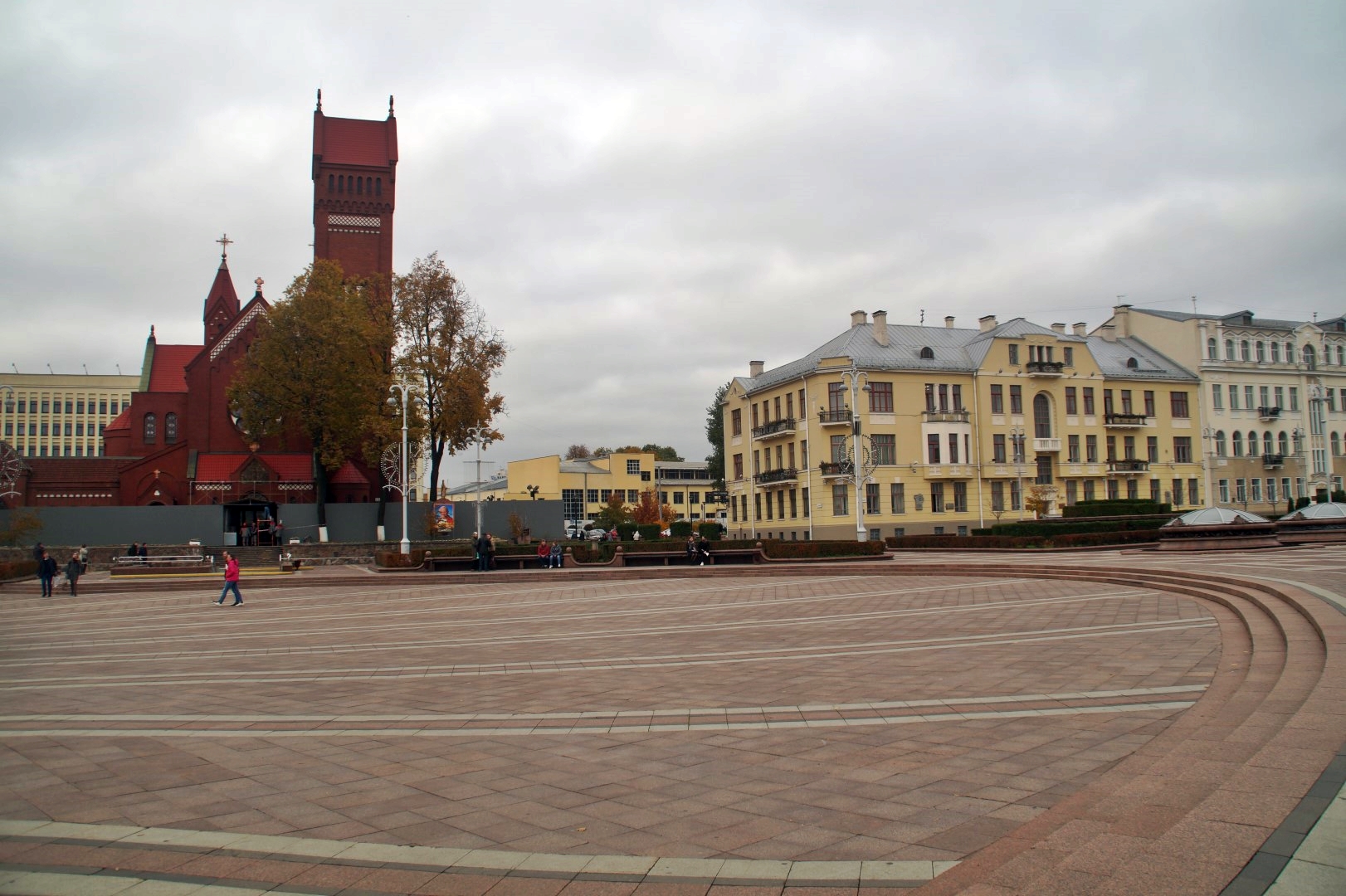
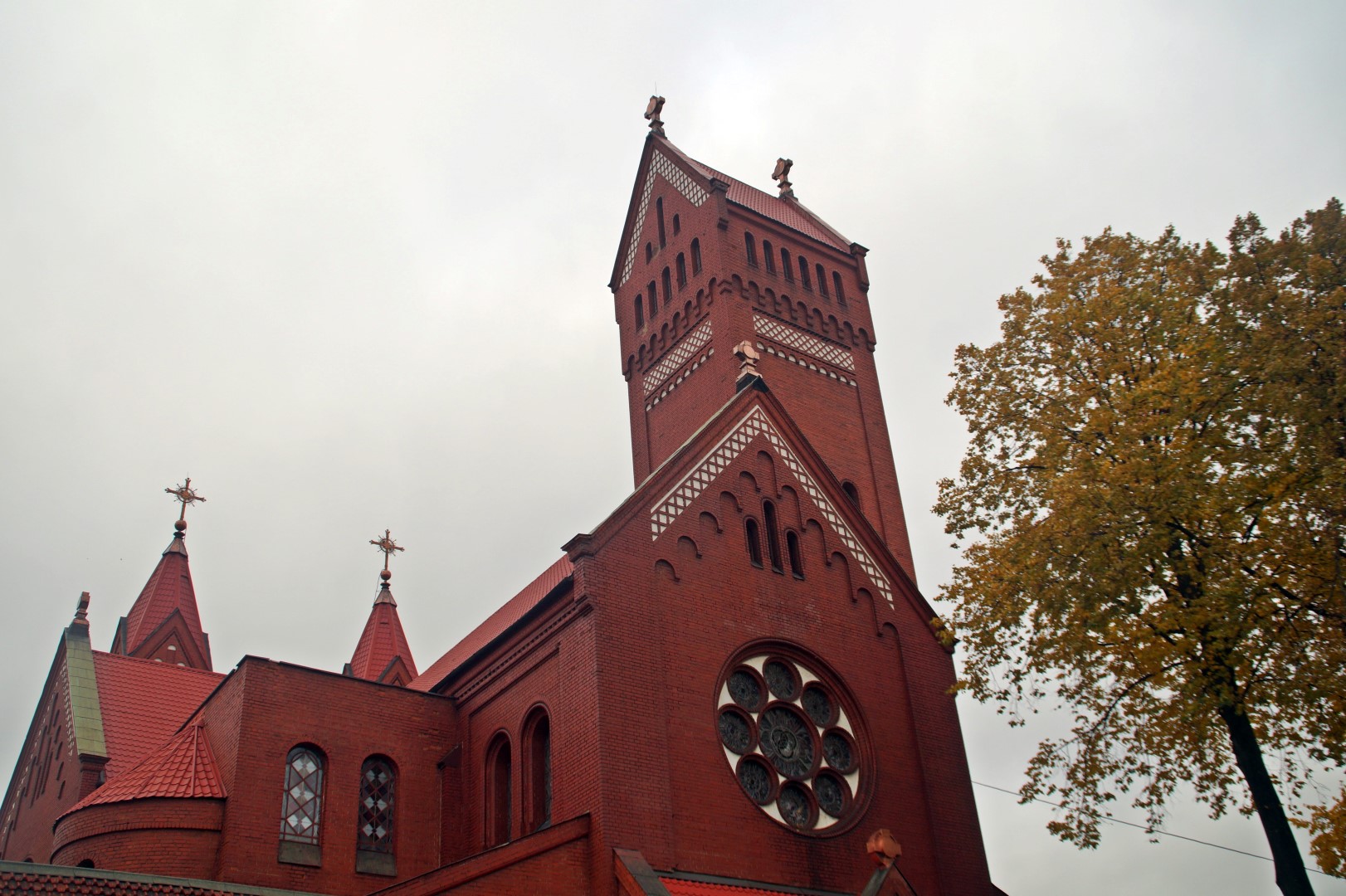
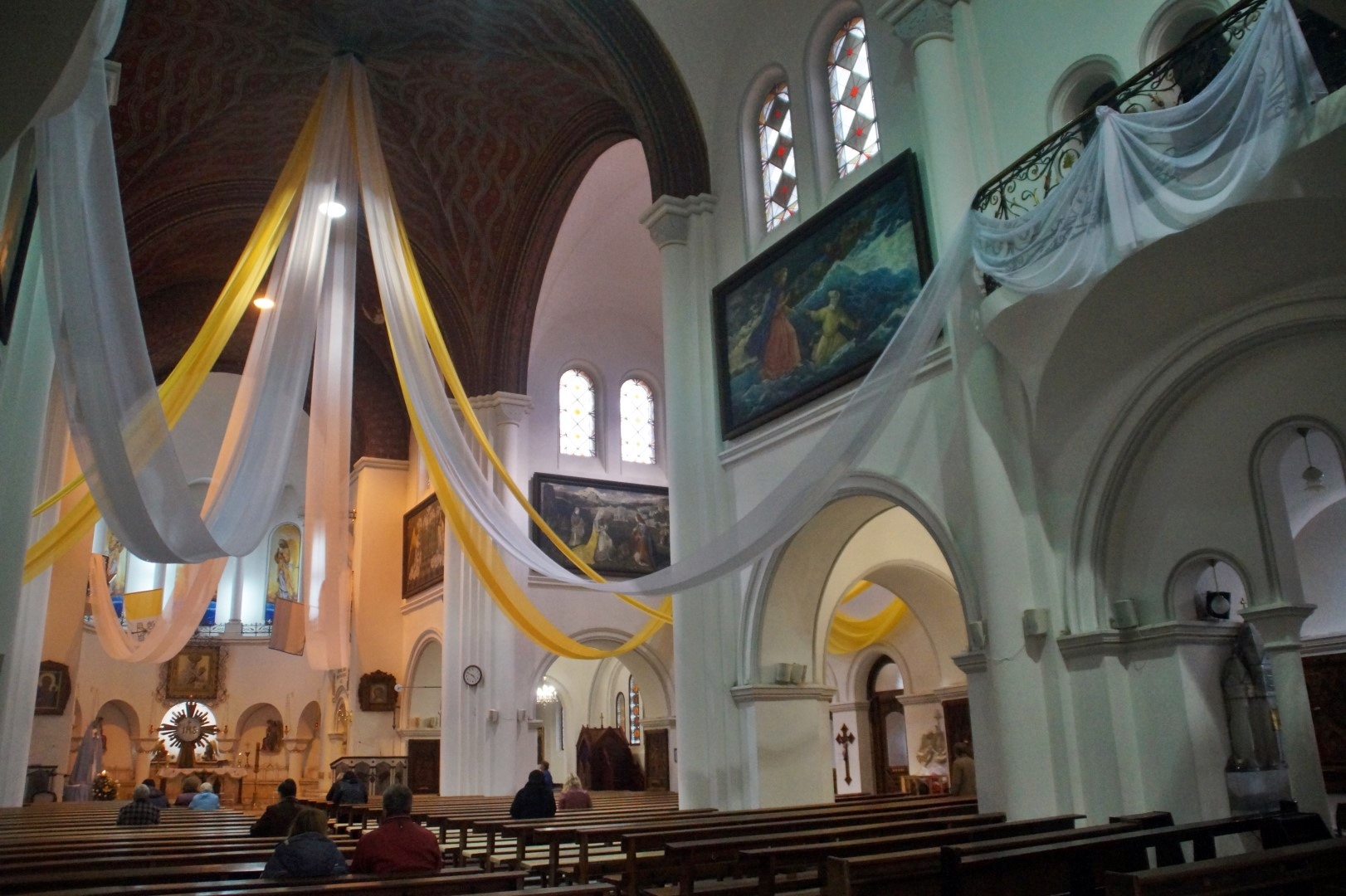
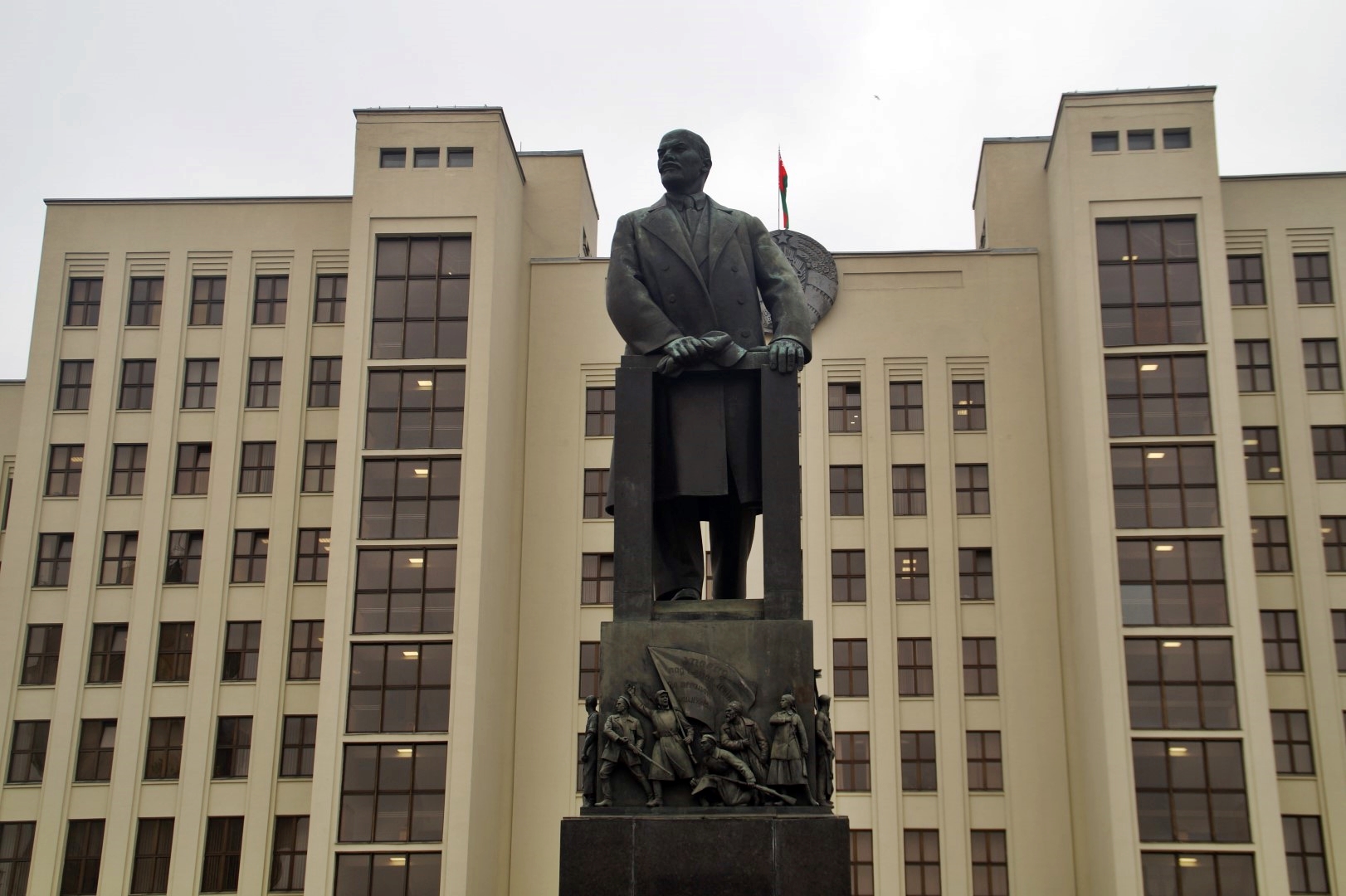
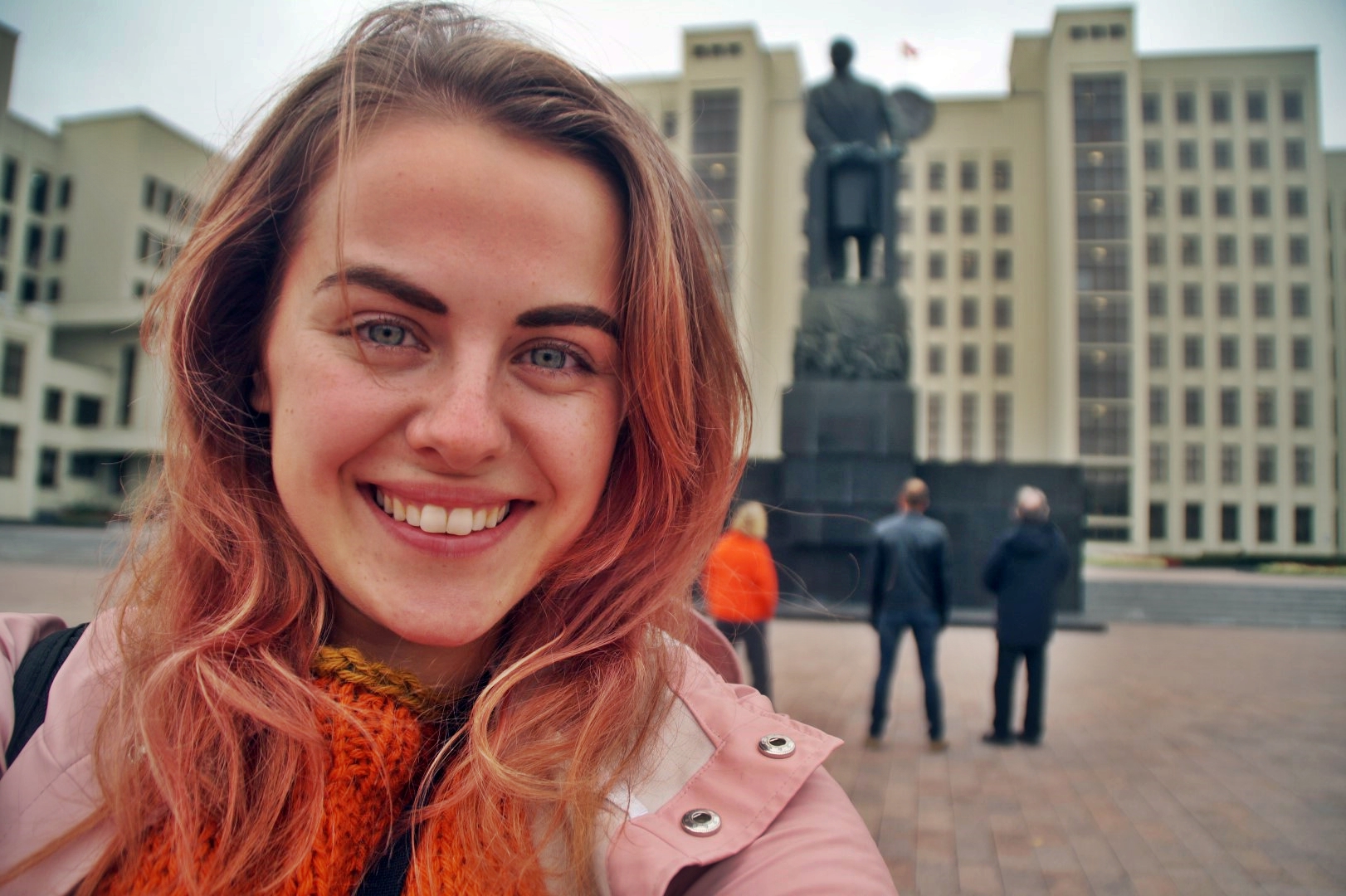
There are many beautiful churches in Minsk, and one of those is the Church of St Peter and St Paul, the oldest Orthodox church in the city. The church was constructed in 1613 by the residents of Minsk with the help of monks, who later settled there and began daily church services.
When I walked inside the church, I saw that a ceremony was going on. In most of the other churches I checked out that day, there were also ceremonies, which seemed strange to me since it was Tuesday. But maybe that’s normal in Belarus on a daily basis? It definitely seemed like a Sunday to me!
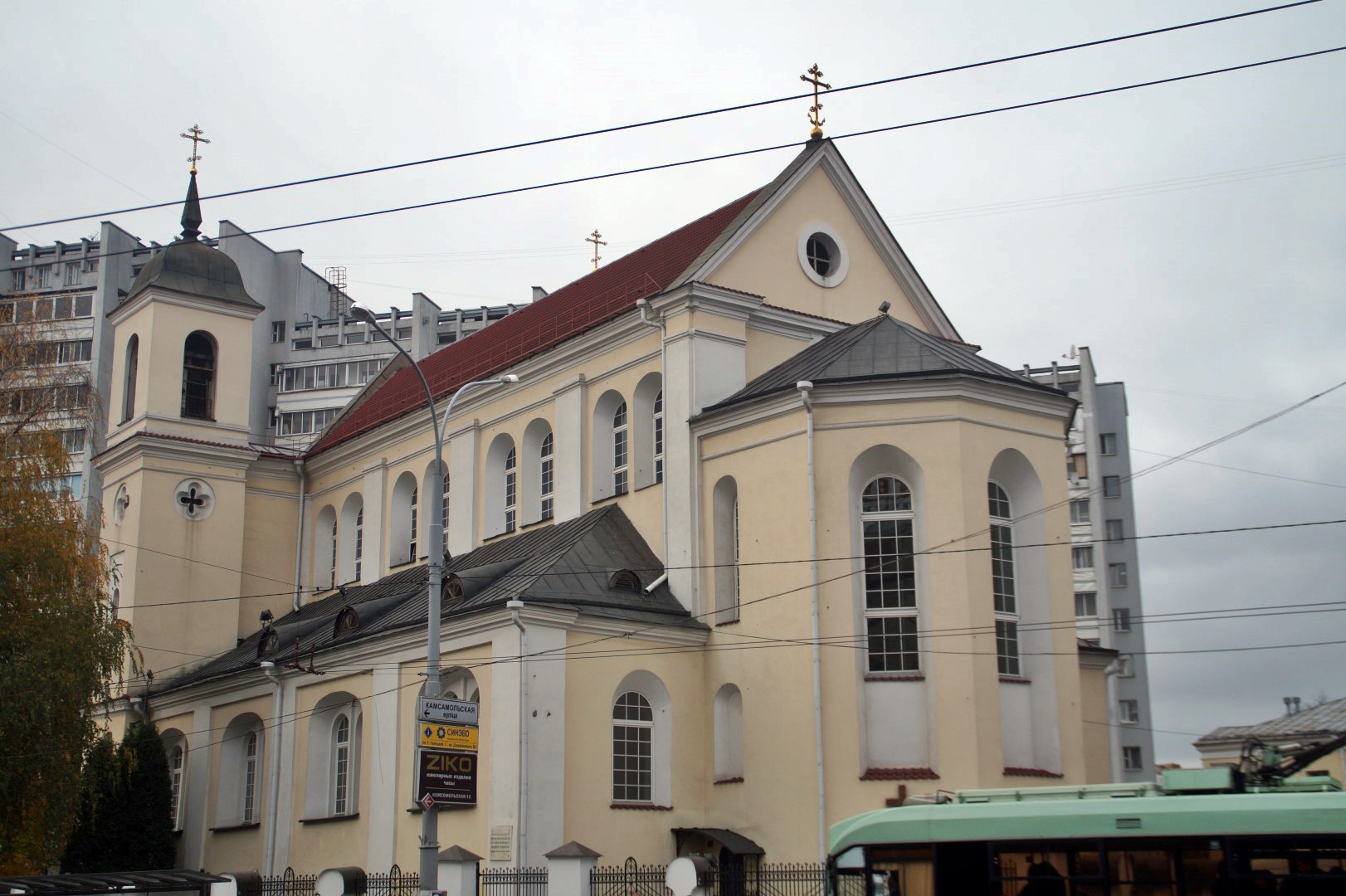
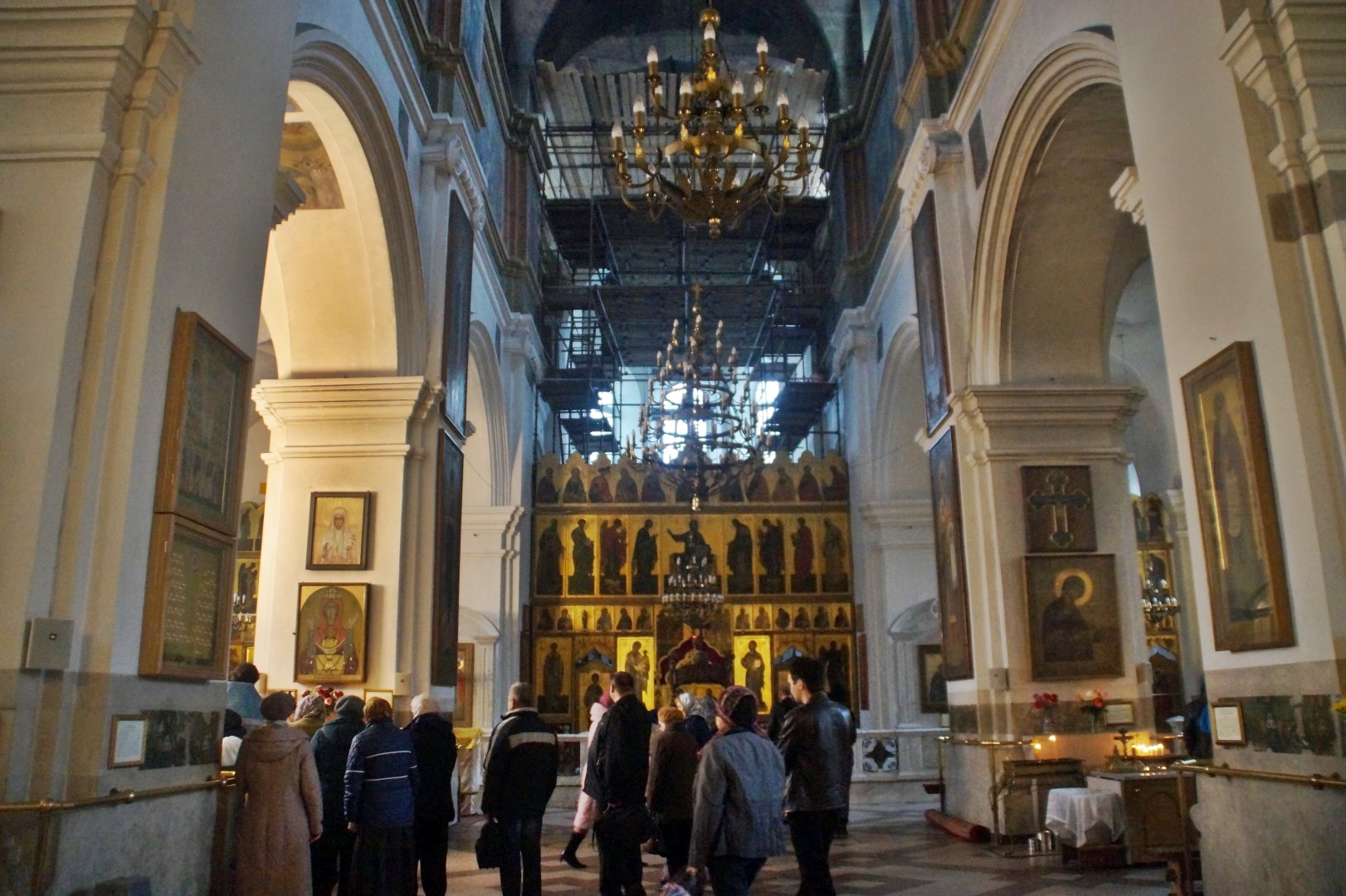
After attending the ceremony for a while, I walked across the Svislach River, which flows right through the center of Minsk.
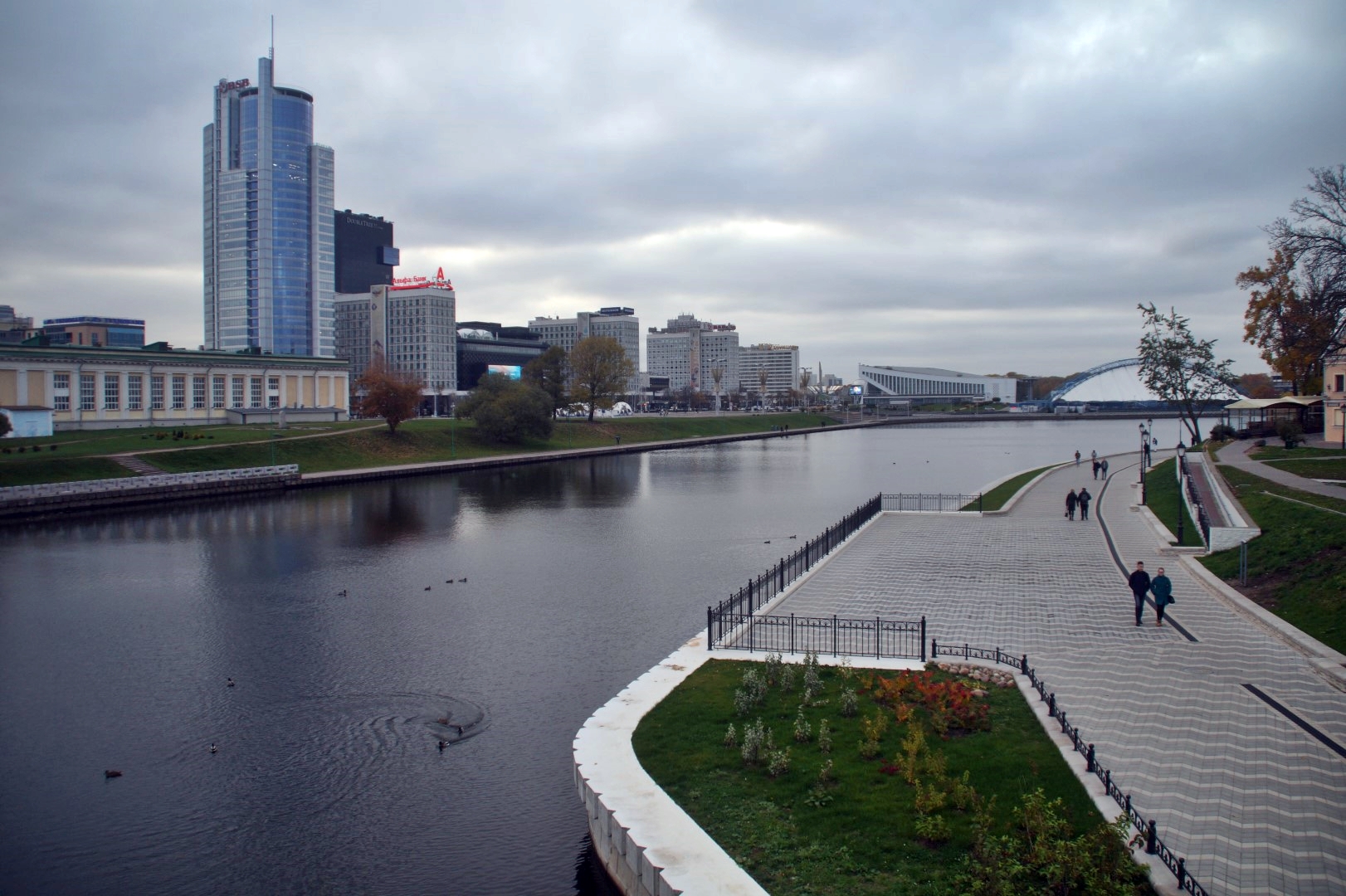
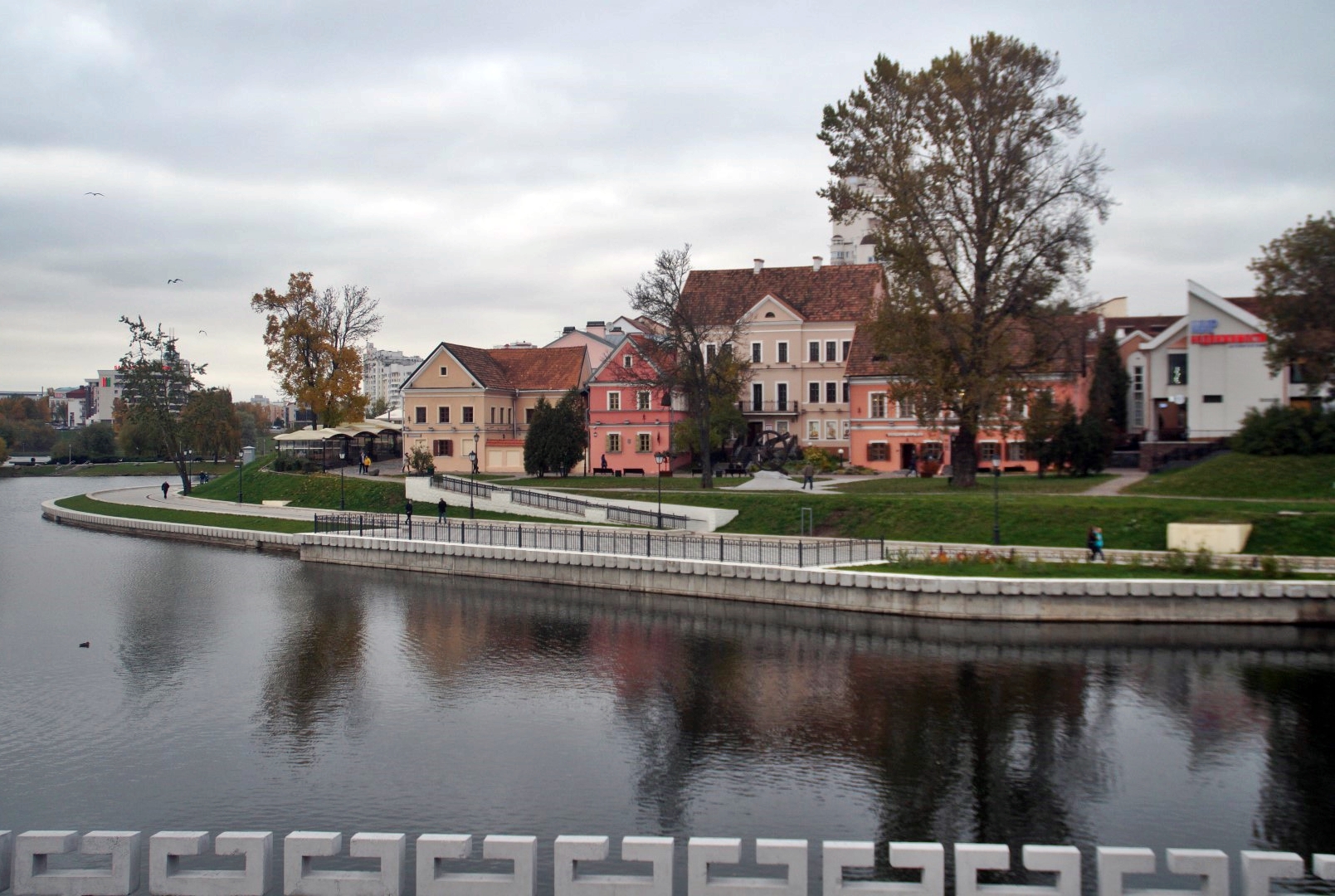

On this other side of the city, there was one sight that I really wanted to see – the Church of Mary Magdalene, which is undoubtedly the most beautiful landmark in the city. This church was built in 1847, decorated with gold ornaments, as a monument of late classicism.
Also, for the first time in my life, I saw a bell-ringer in action, as he rang the church bells by rope, much unlike many western church bell ringings that are now automated. I later learned that there is an advanced ringing tradition in Belarus called ‘full-circle’, which is an artistic and skilled performance, which is hard to automate.
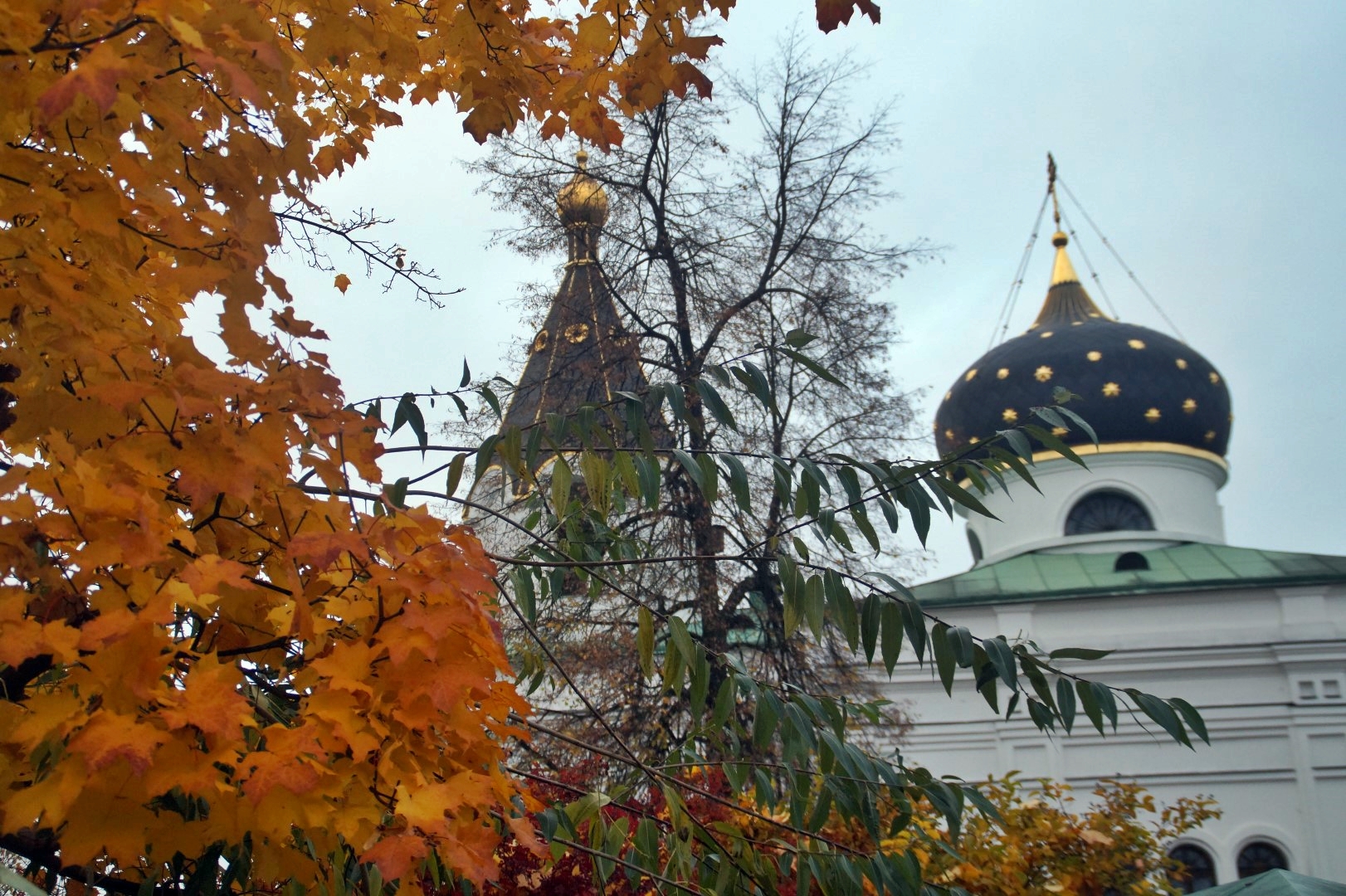
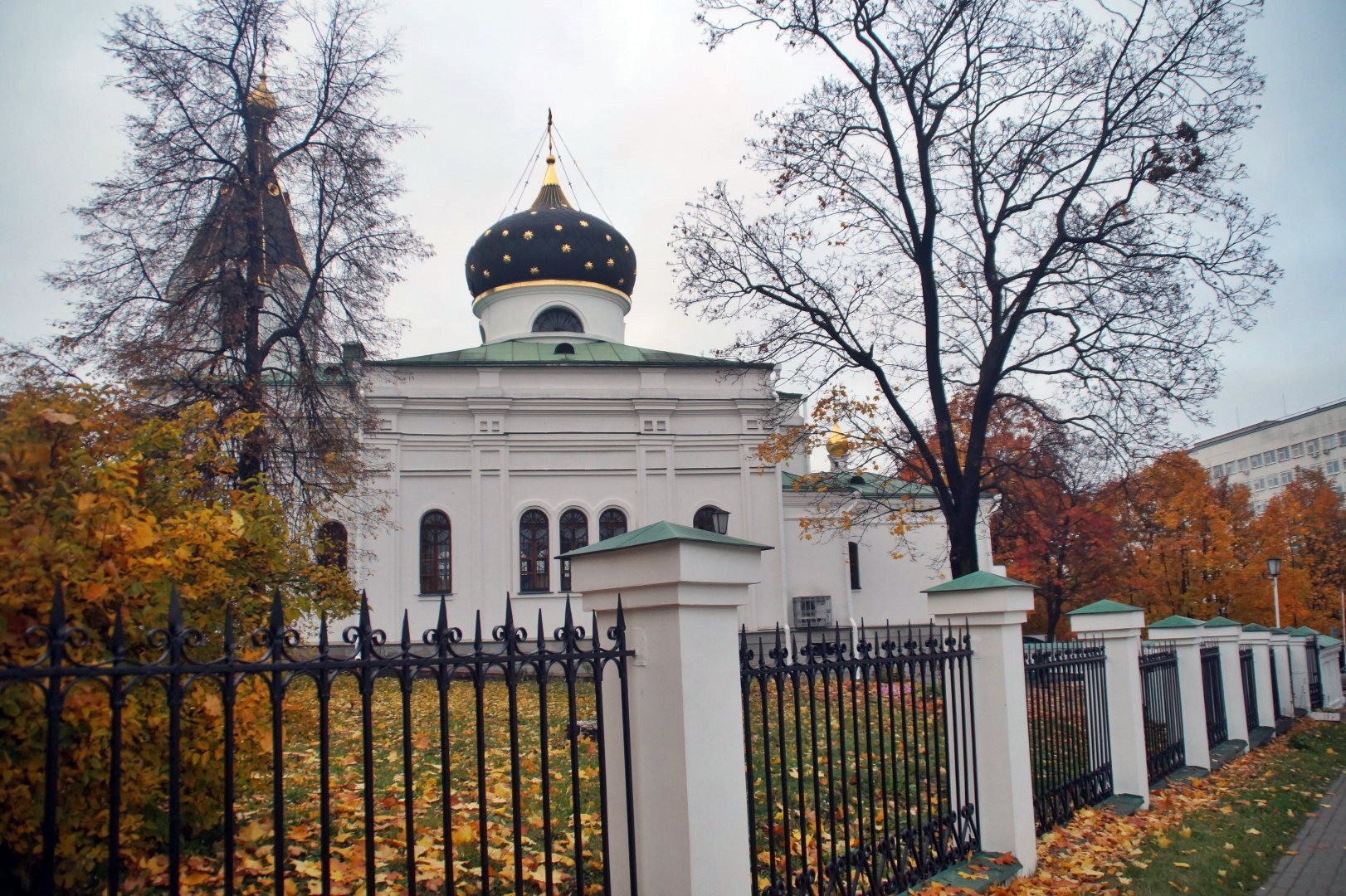
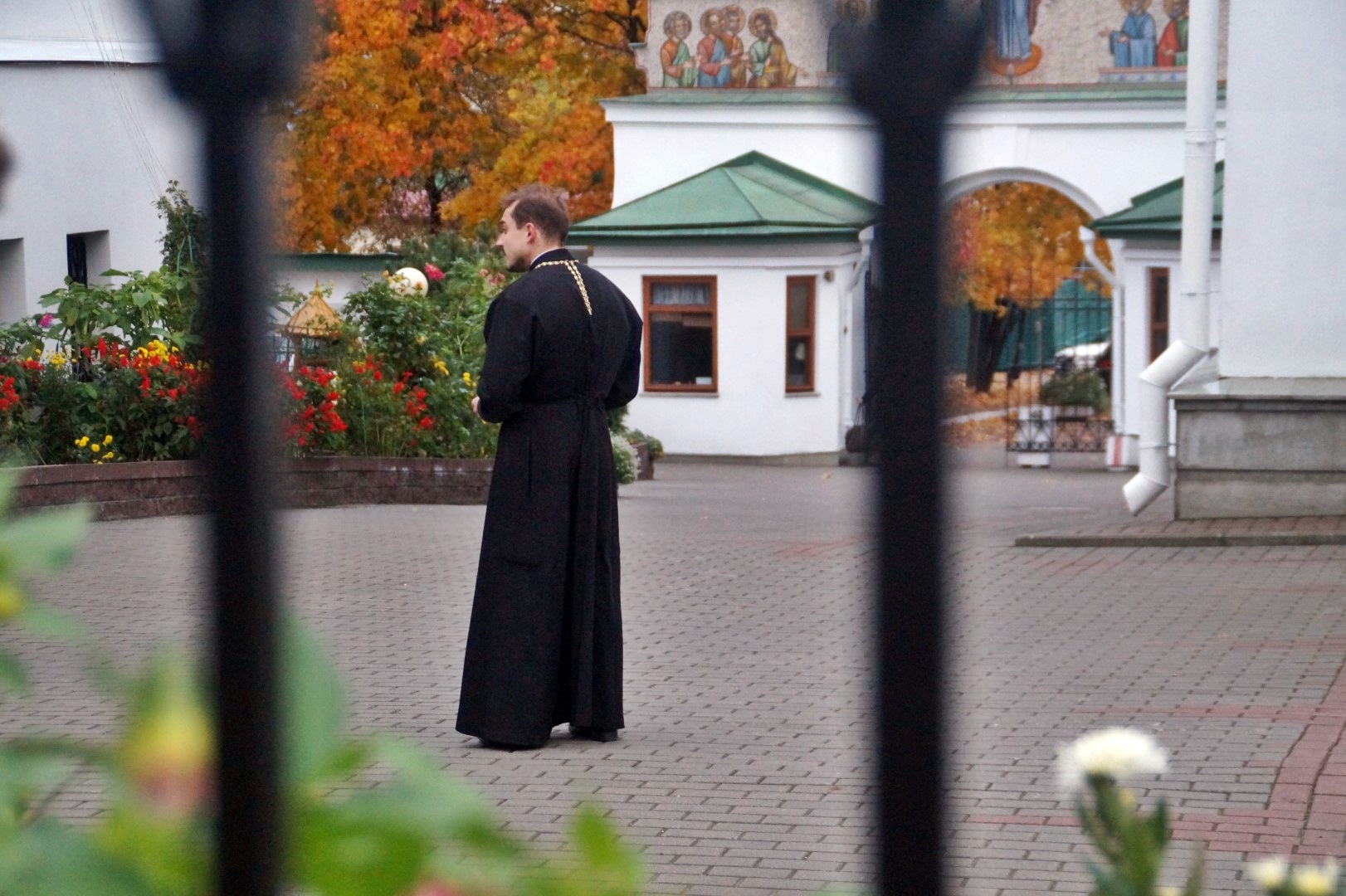
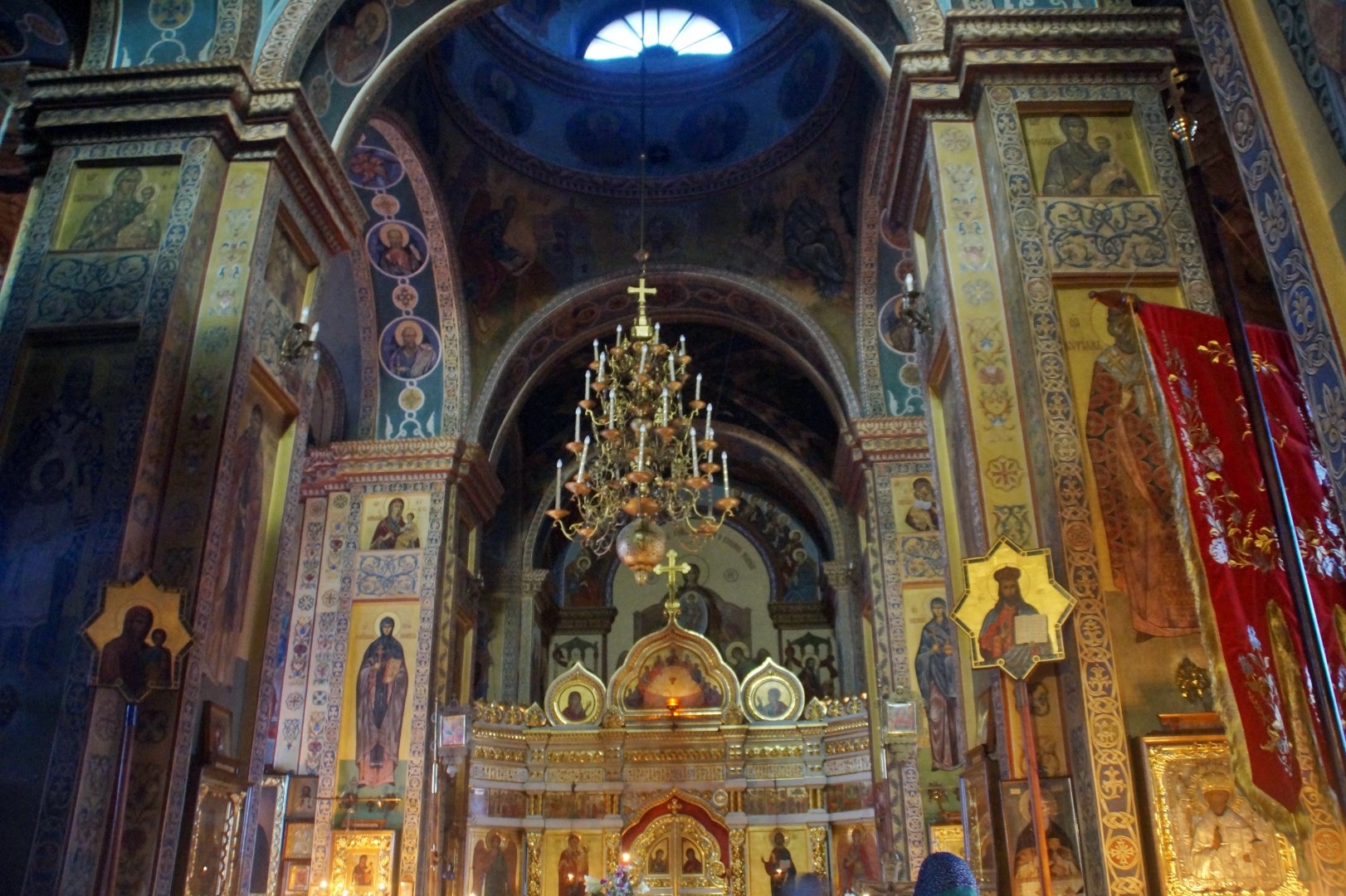
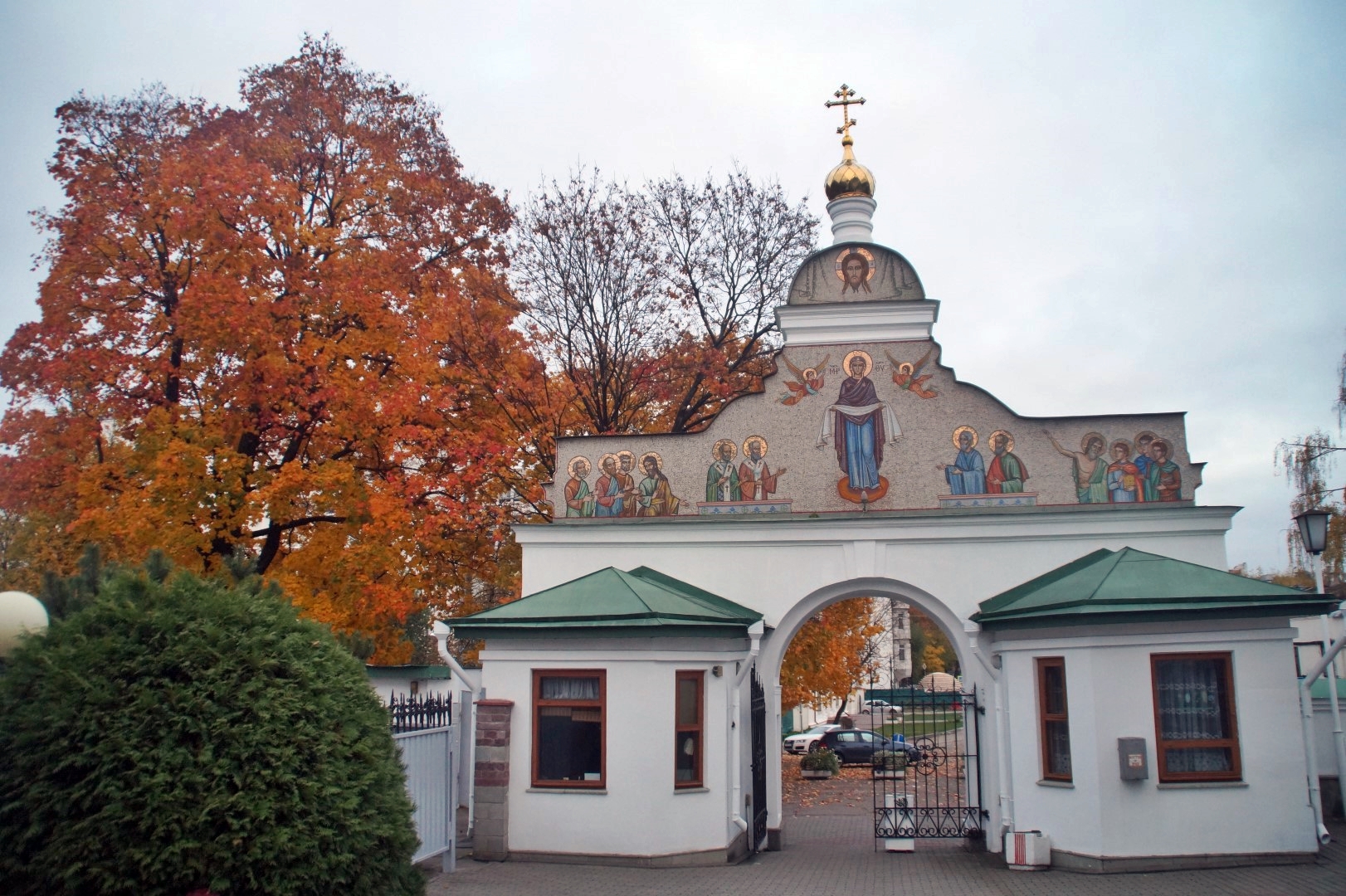
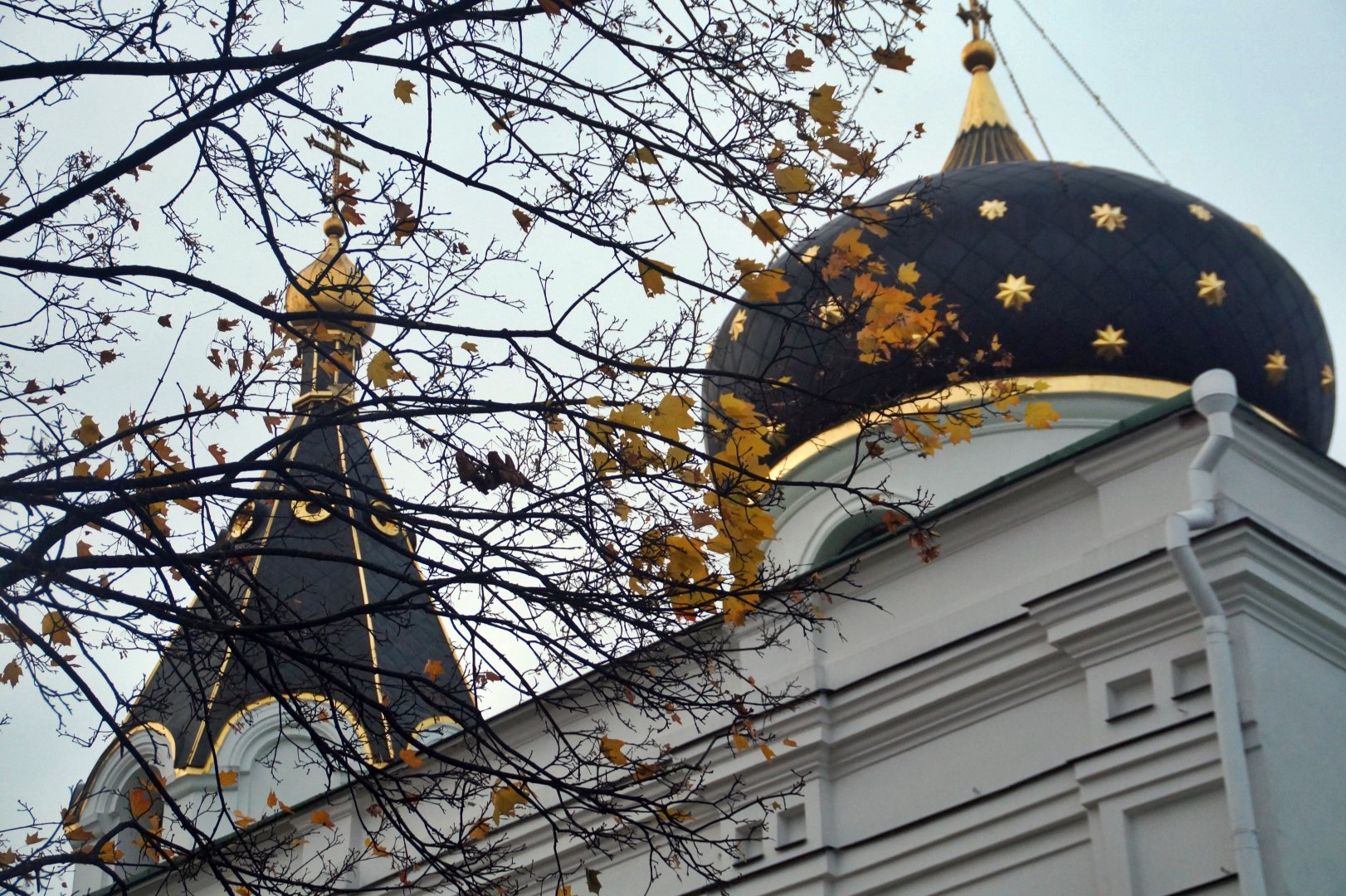
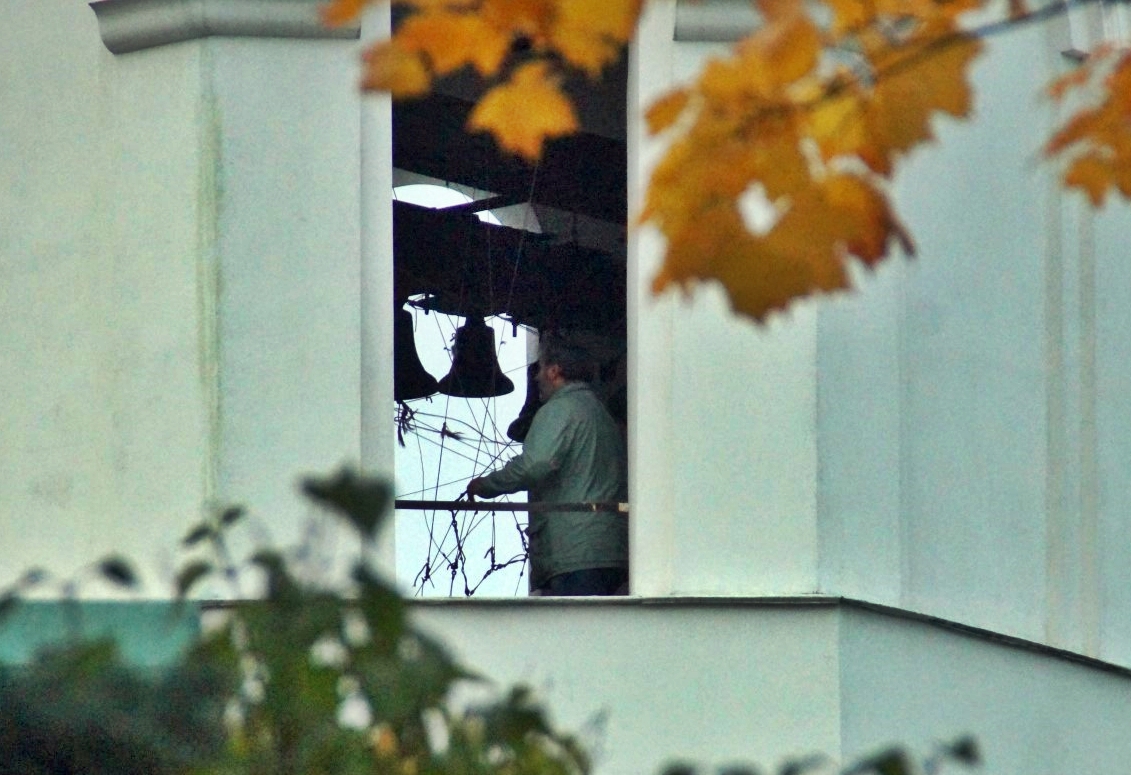
I then walked back over the river to the Upper Town, the very heart of Minsk. This area has really well-preserved buildings from the 16th and 18th centuries and consists of the Svoboda Square, many quaint streets and impressive cathedrals.
Although the oldest buildings in the area are from the 16th century, the building of settlements there began in the 12th century. By the 16th century, most of the rich and influential citizens of Minsk lived in the Upper Town, which was considered the center of the city.
Unfortunately, many of the historic buildings were demolished during the World War 2, but great efforts were put into restoring the area in the postwar period.
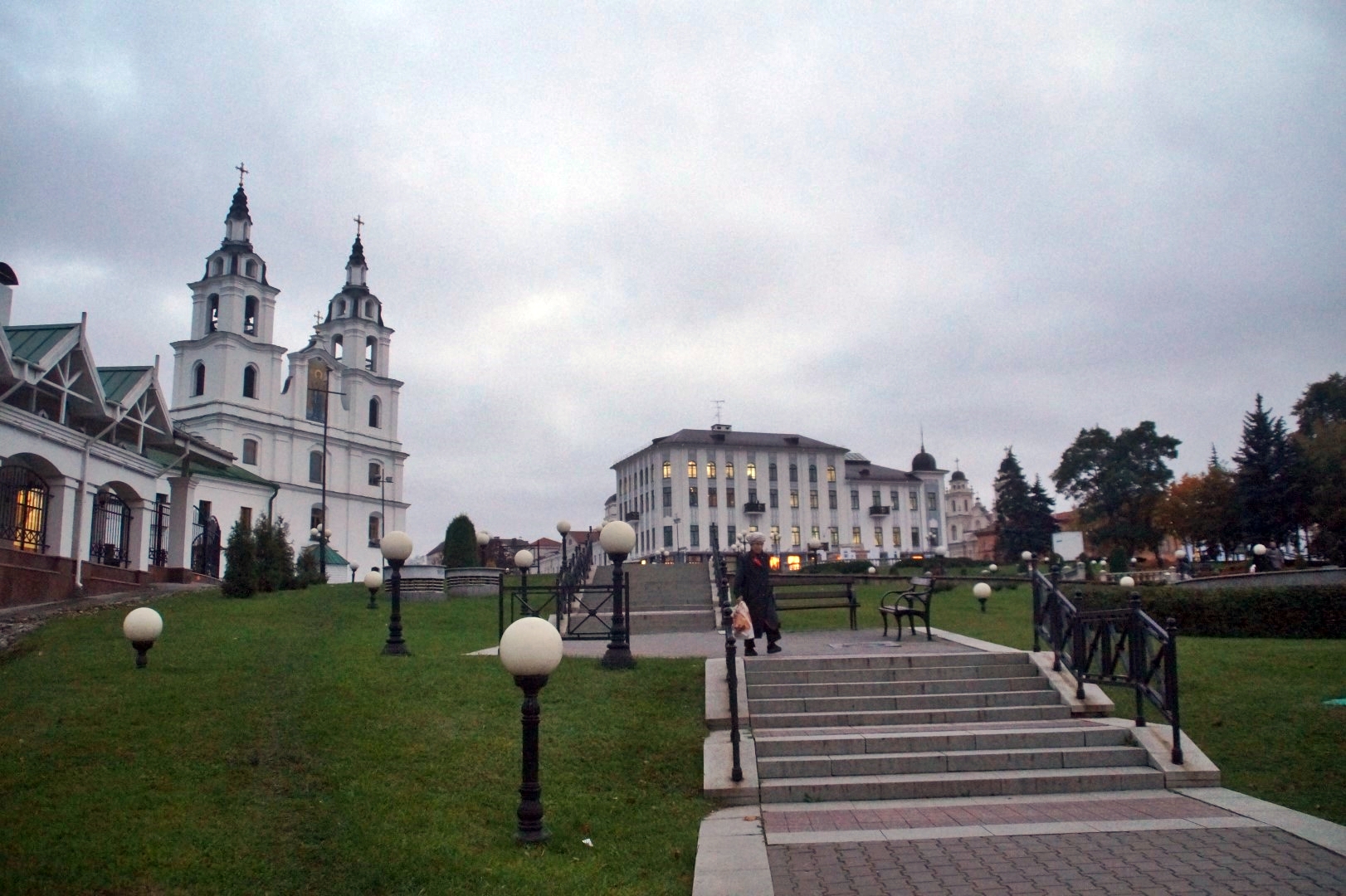
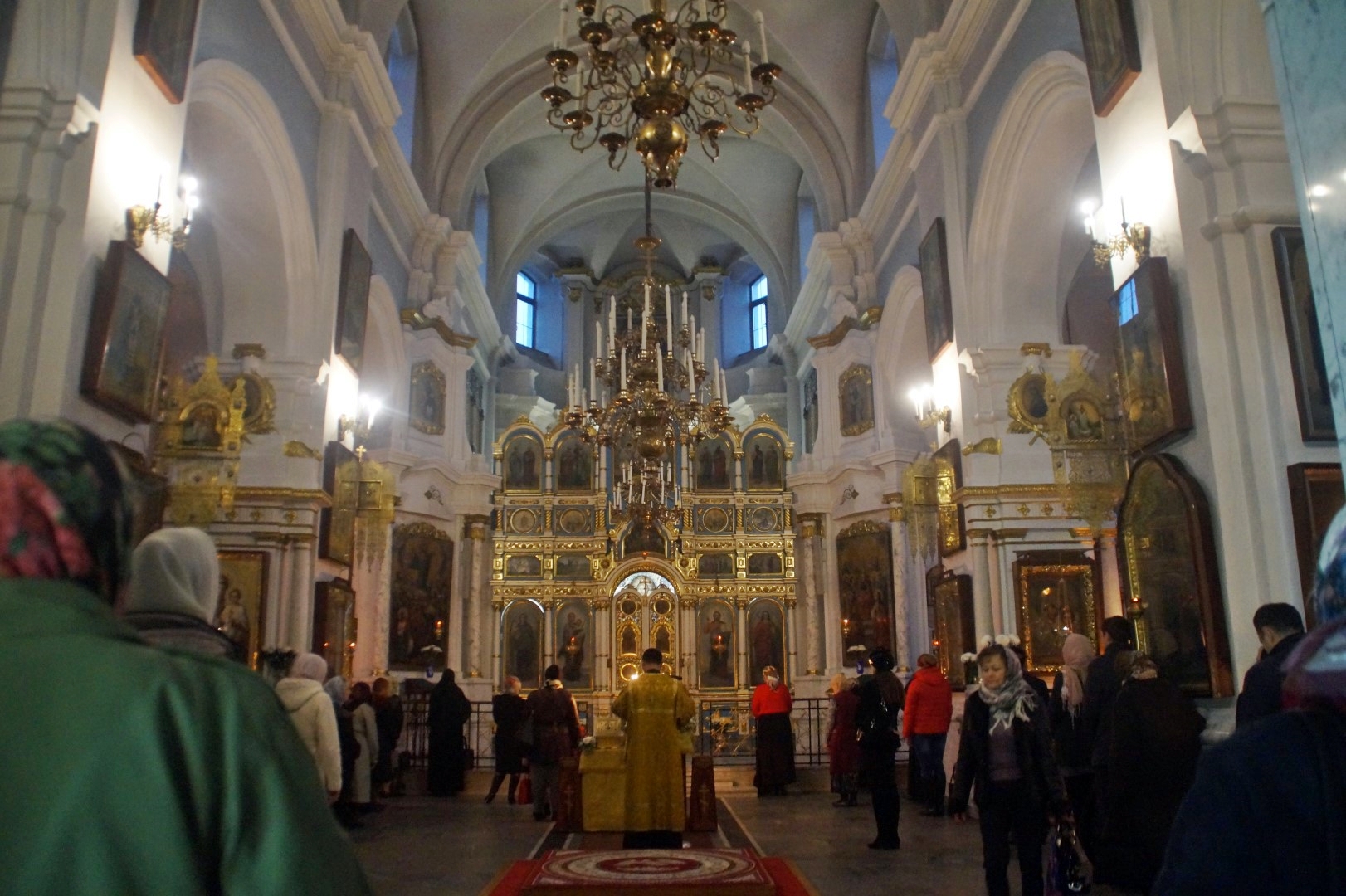
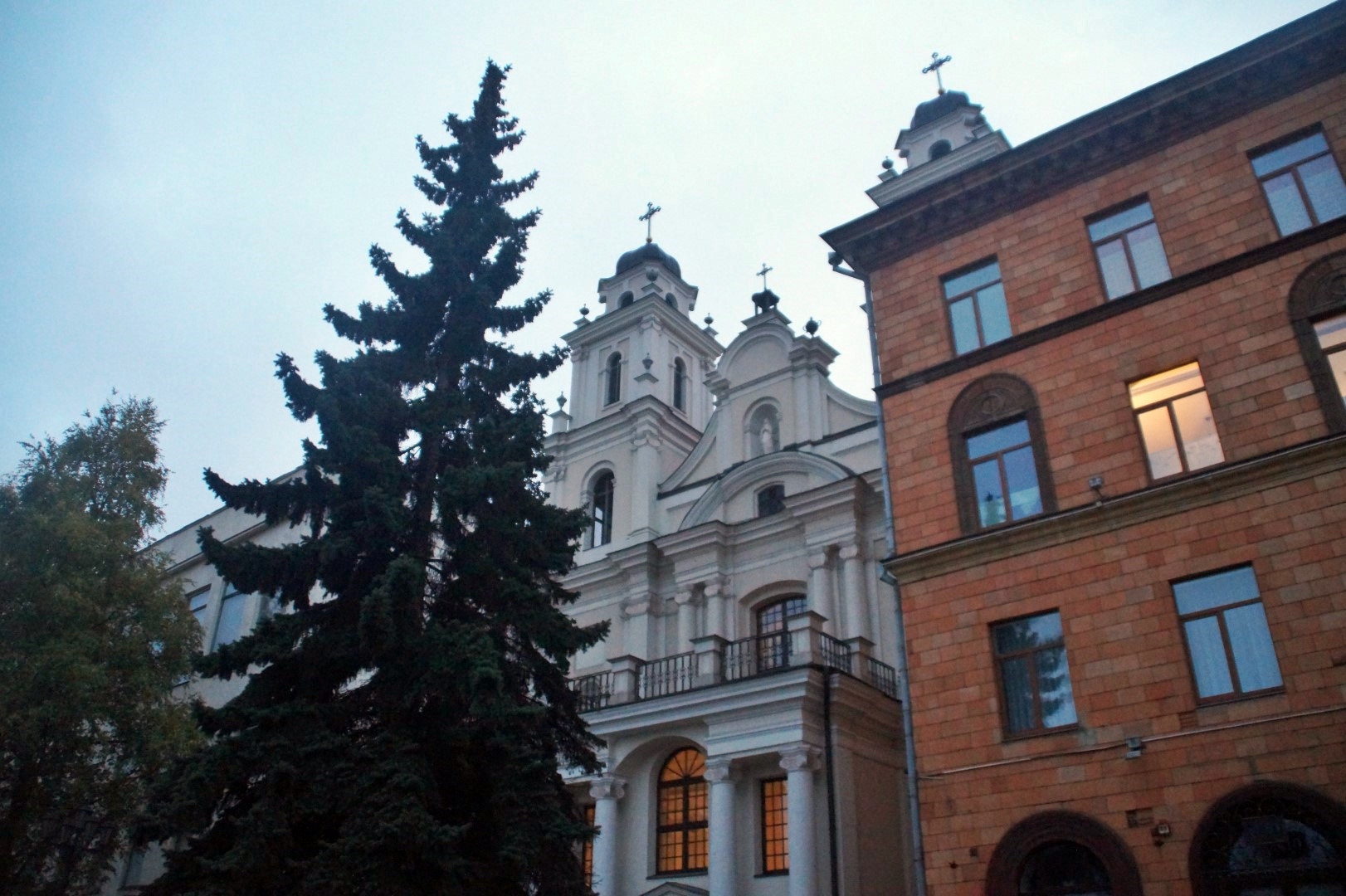
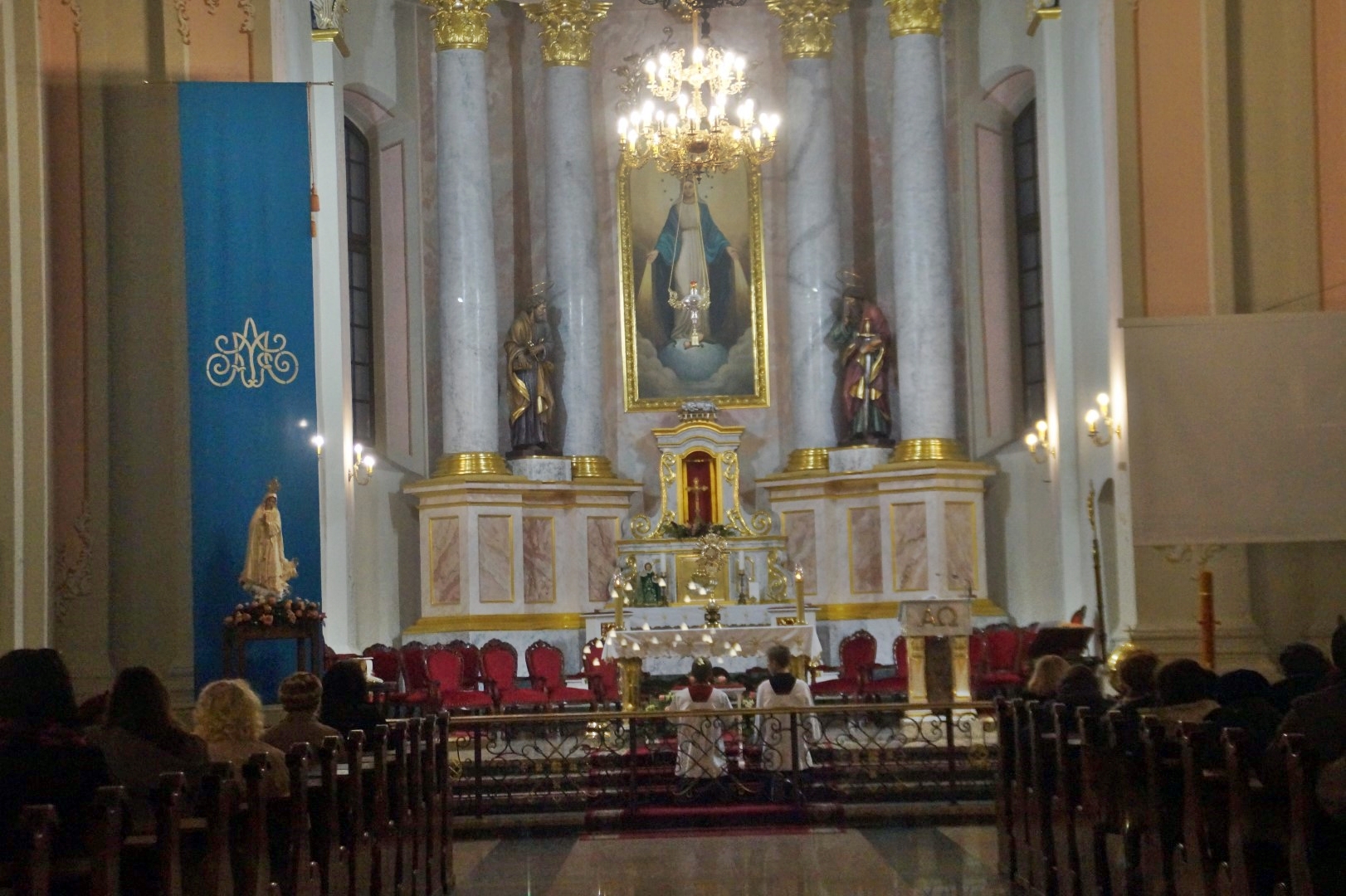
During my days in Minsk, I stayed at the Revolucion Hostel, which is located a few streets from the Upper Town. When I got to the hostel in the evening, I had the surprise of a lifetime, when I met no less than 28 DANISH PEOPLE!
They were all studying at the university in Aarhus, some social science, some Eastern European studies, some law studies etc, and they were on a field trip to Minsk. What an incredible coincidence!
They invited me out to eat, and despite my extreme tiredness after only sleeping four hours the night before (I had to get up at 3 AM to catch my flight), I said yes and we had a fun evening eating at a not-so-brilliant-but-quite-expensive local restaurant.
I came to Minsk searching for the Belarusian experience, but the Danish experience in a country like Belarus wasn’t all that bad. I think it’s interesting to meet a bunch of likeminded people from my own country, as most Danish people tend to only travel to “safe” (more like boring/touristy) places. But these guys were in Belarus!!! Nobody ever goes there haha! I was so excited. Quite a few of them had travelled as much as me or more, and shared my passion for travel, so it was great to talk to them and hear all about their past trips and future travel dreams.
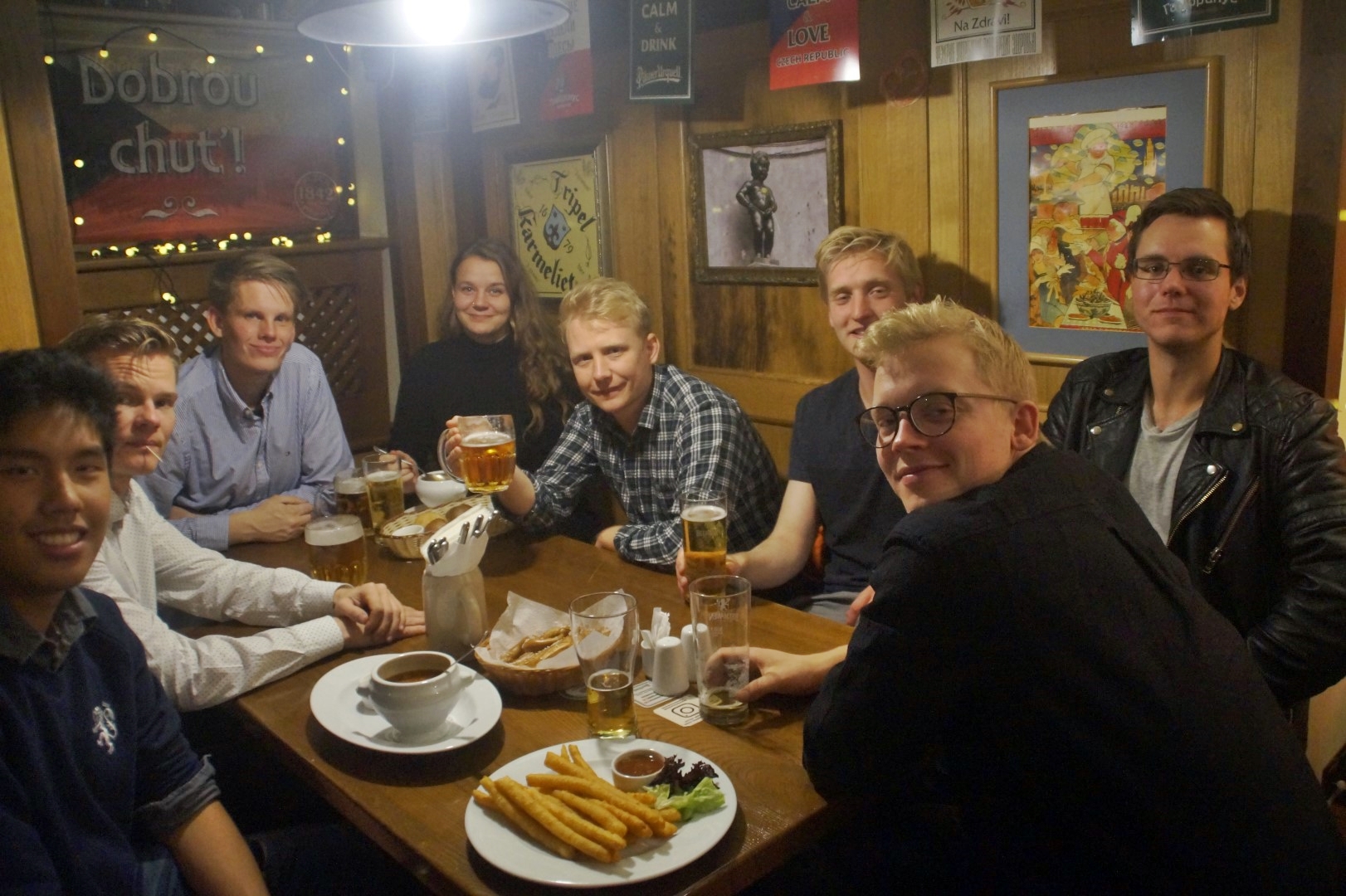

To be honest, I didn’t care much for Minsk in the beginning, but I must admit that it grew on me. I spent the next three days exploring other parts of the country, but all except one evening, I came back to Minsk.
The city is extremely clean, the people are friendly, the shopping is great (spent too much…), and there’s even a cat café! I was going to go there on my last day before going to the airport, but unfortunately, the cats had made a mess, so it was closed until later that day. Instead, I decided to go to a shopping center to kill the time before my flight, and somehow, I ended up blowing all of my money 
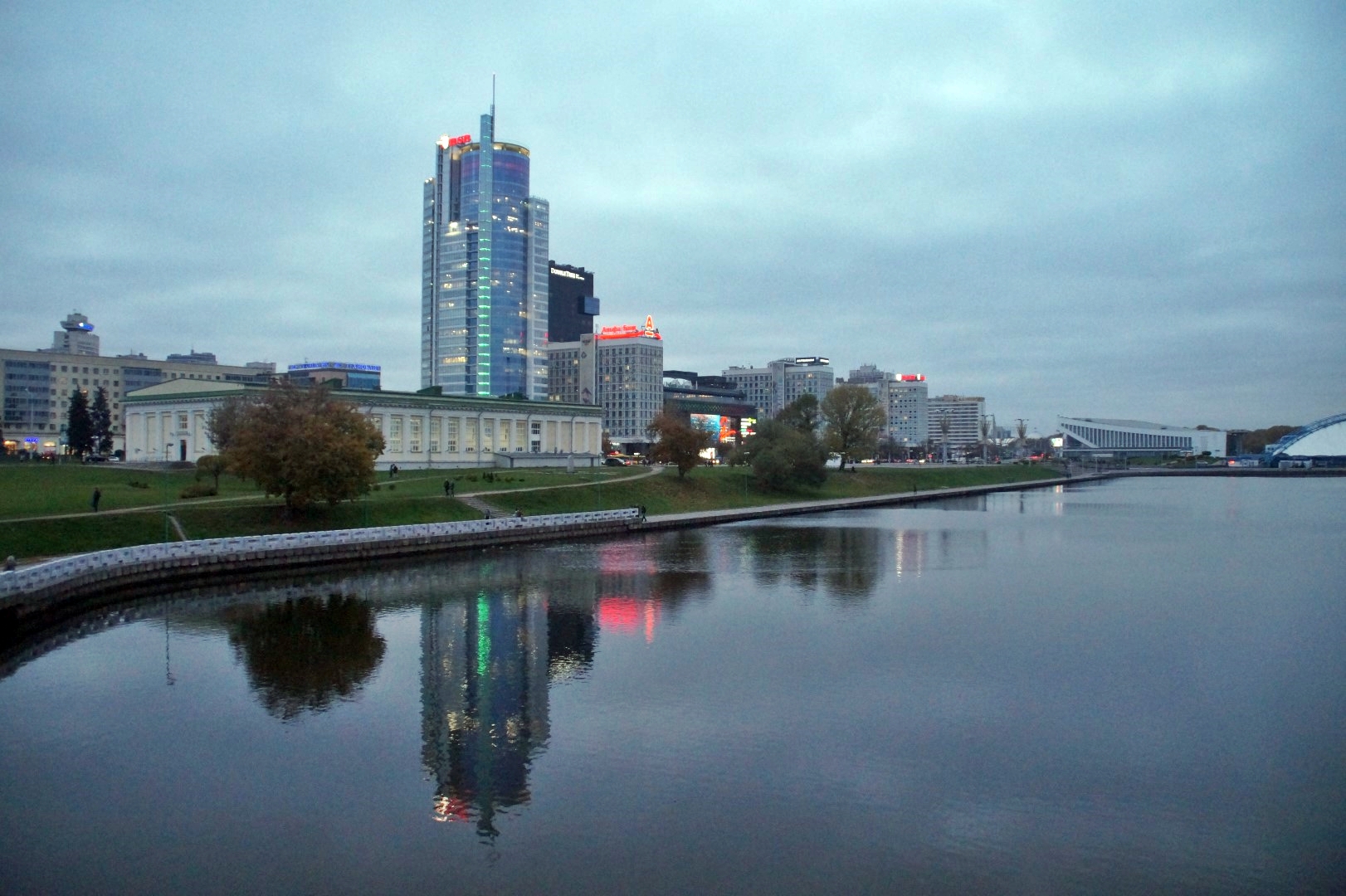
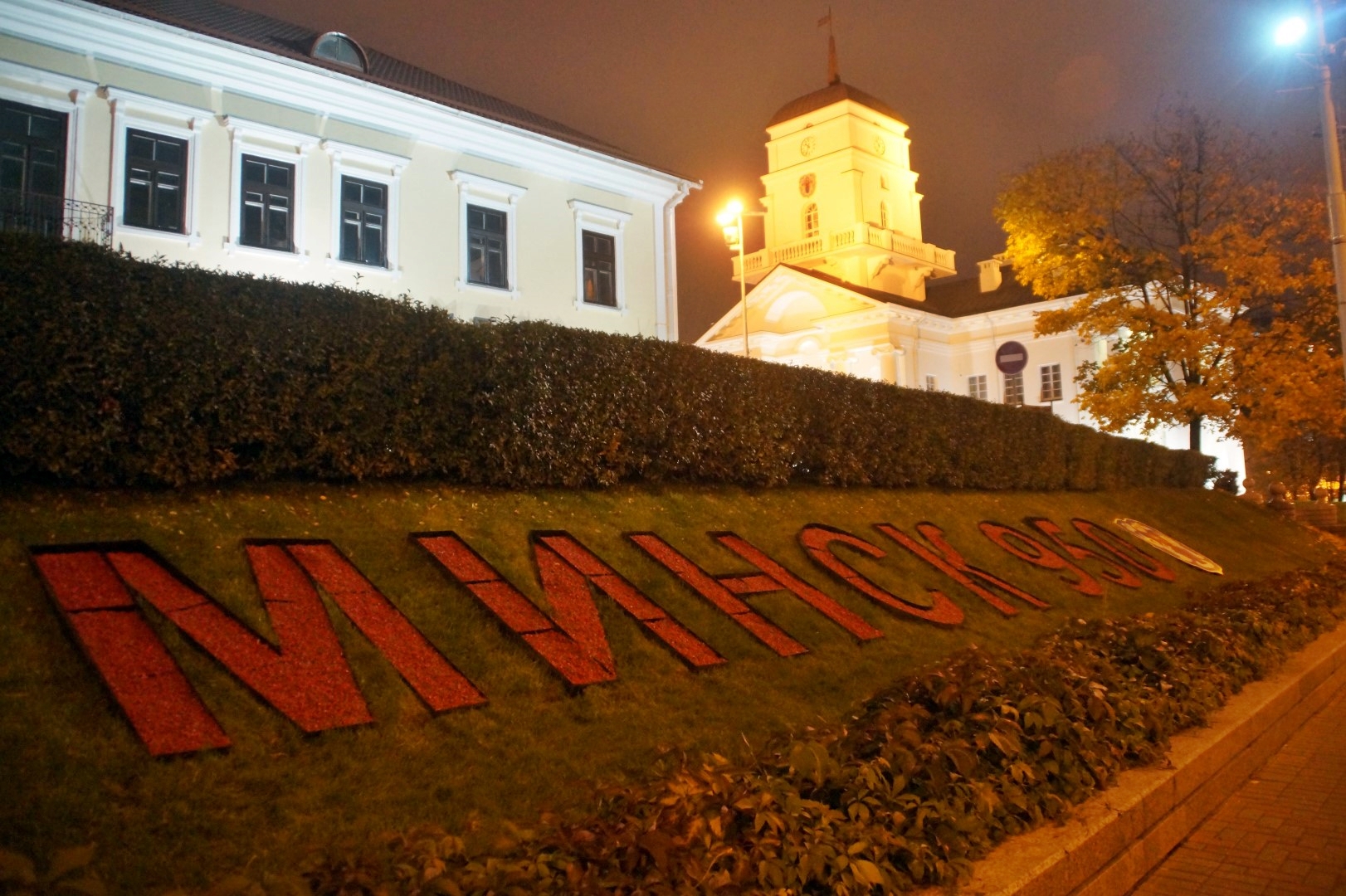
So all in all, Minsk was a great experience, and I felt very safe in the city. I loved the fact that I met 28 Danes and I enjoyed going to bars with them in the evenings and exploring the many undiscovered parts of the city the first day! I wouldn’t be opposed to coming back to Minsk someday.
Off to Minsk? Download a city guide for Minsk with GPSmyCity here!
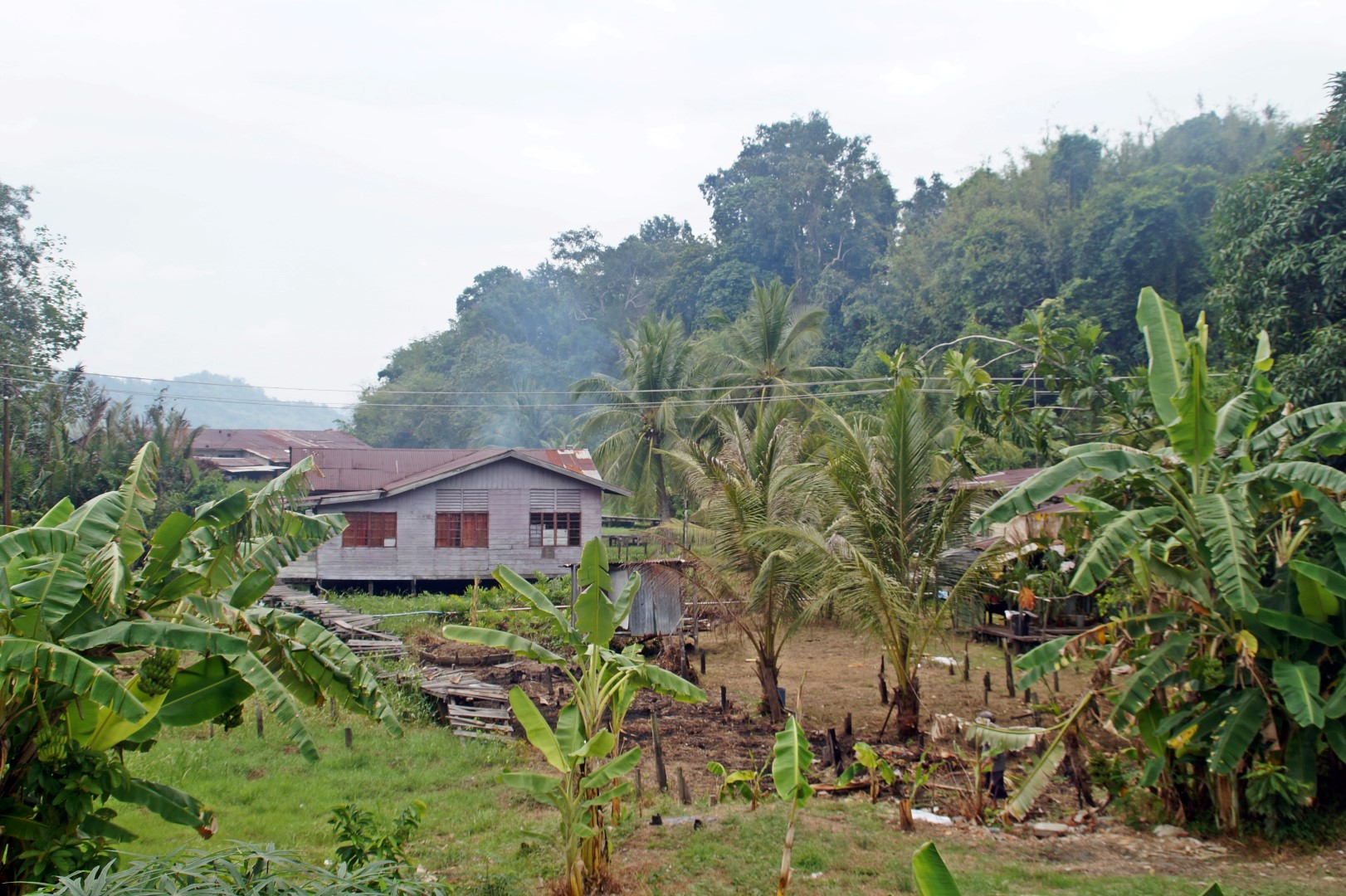
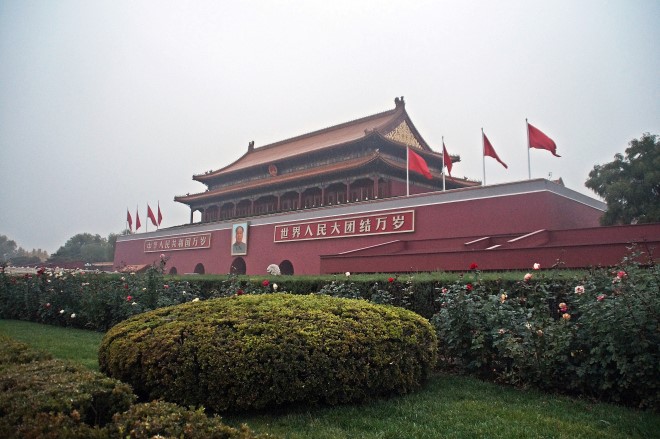

2 COMMENTS
Ann
8 years agoSuch beautiful shots and warm description of this mysterious city. You are so creative, dear Mel. Belarus is actually a pretty country, but it fully depends on Russia and their money. I surely would not like to talk about politics, but I also know that life there is not simple. Many Belorussians go to Poland to buy food there because it’s cheaper.
Melissa Cherry
8 years agoThank you, dear Ann! Belarus is definitely beautiful, but just like you said, it has its downsides too :/